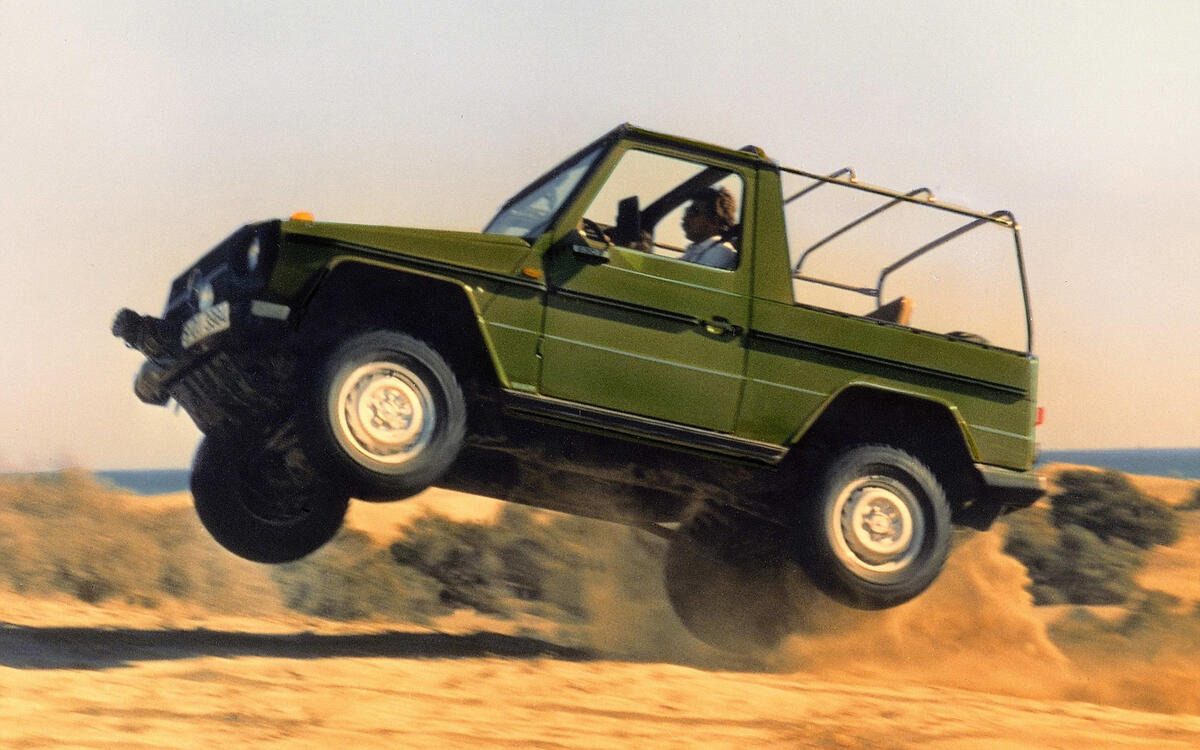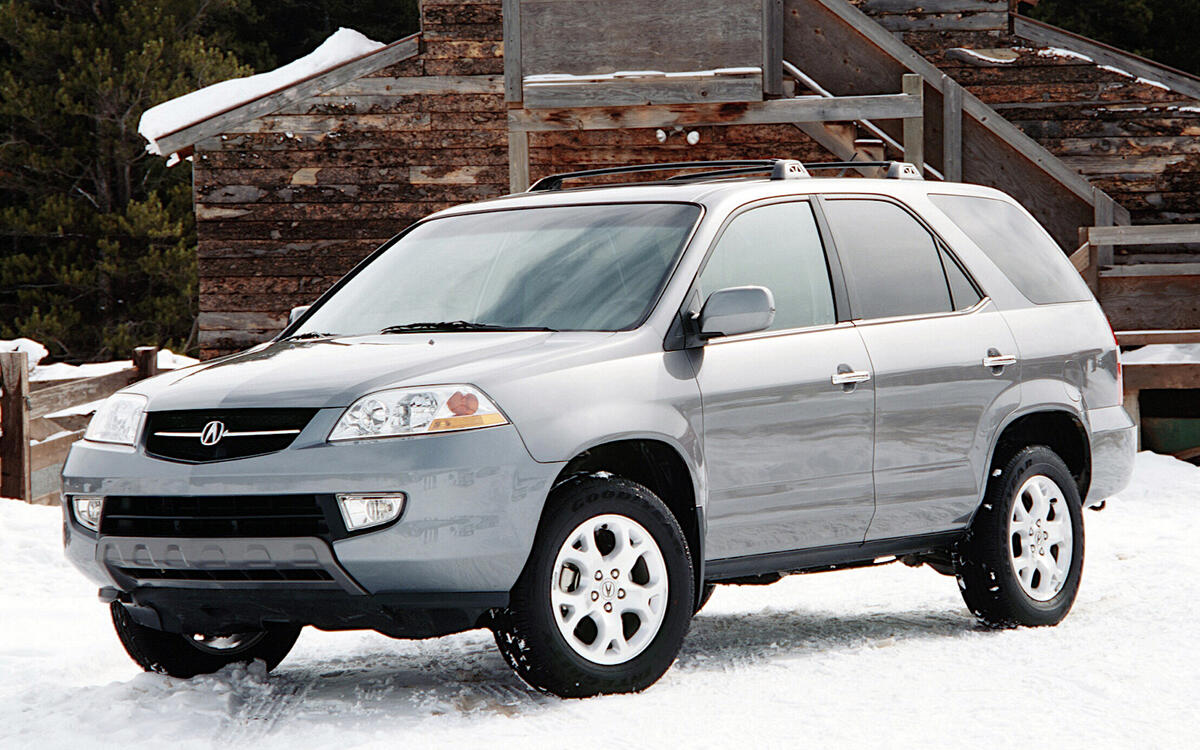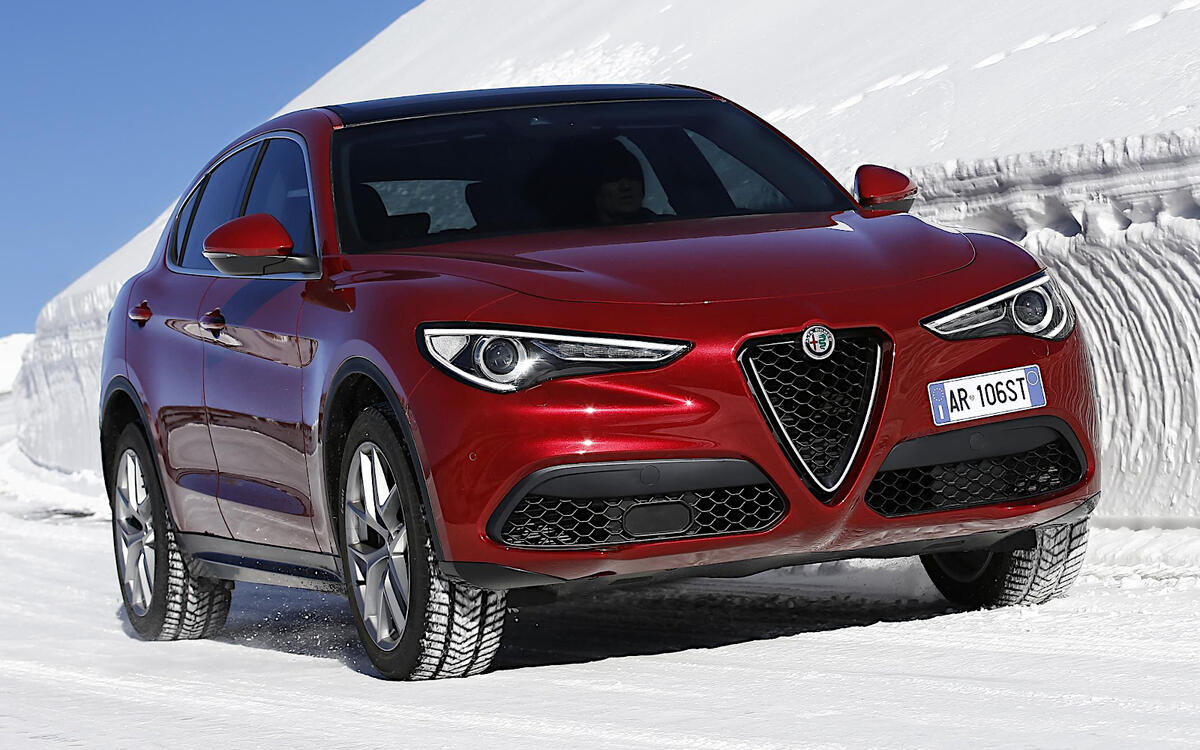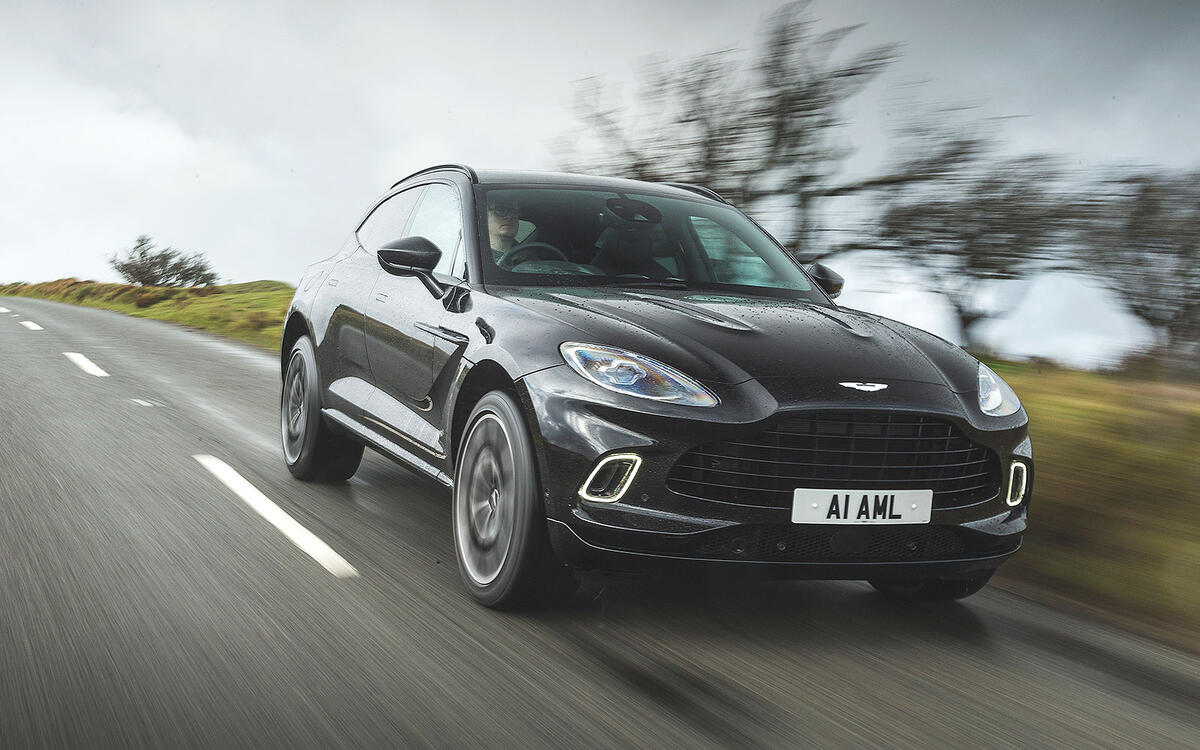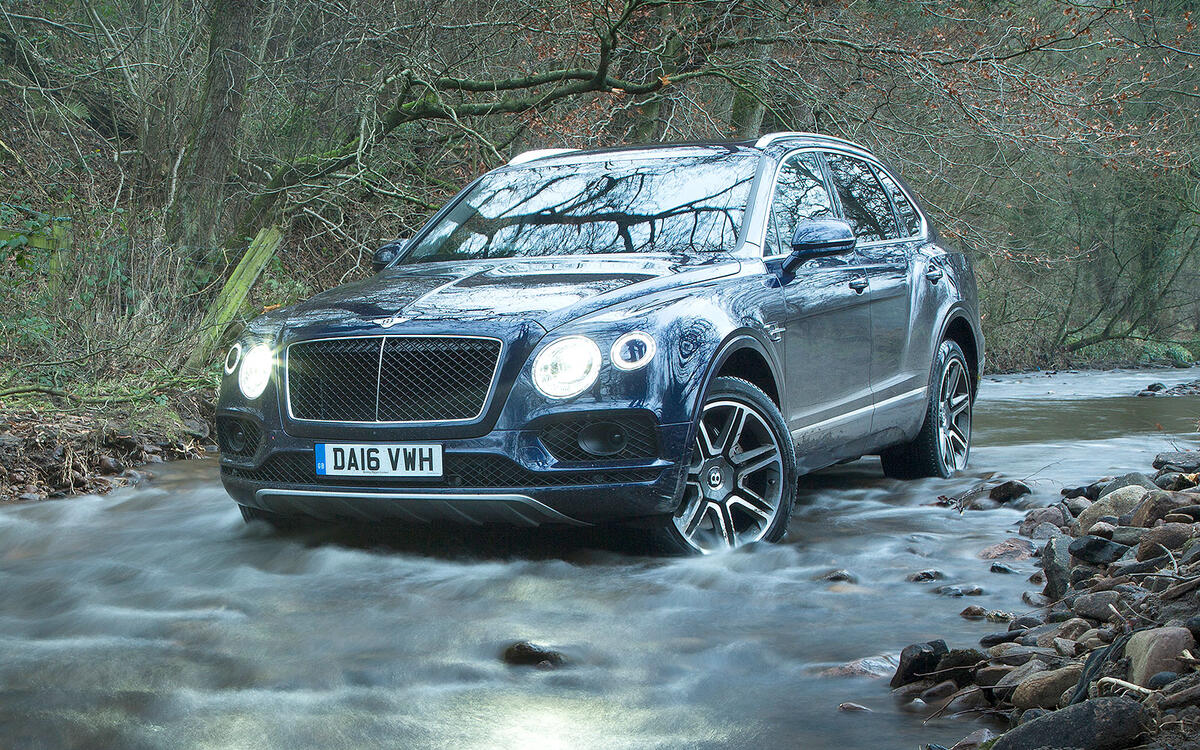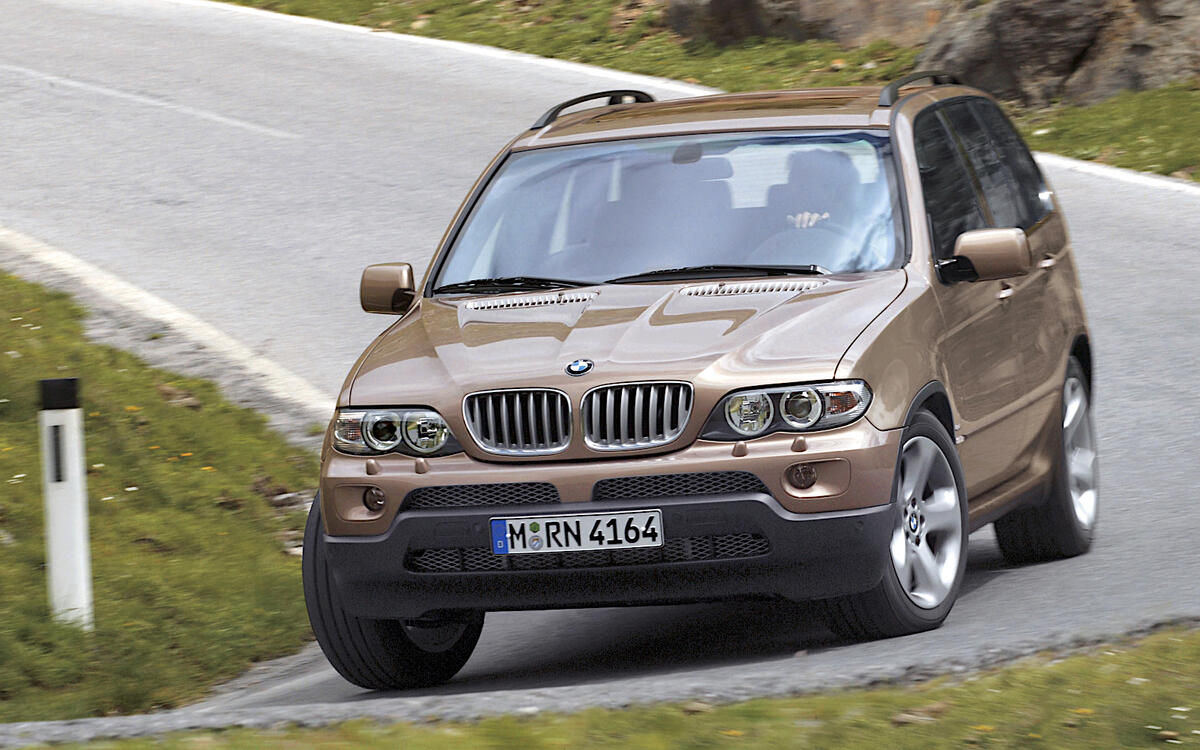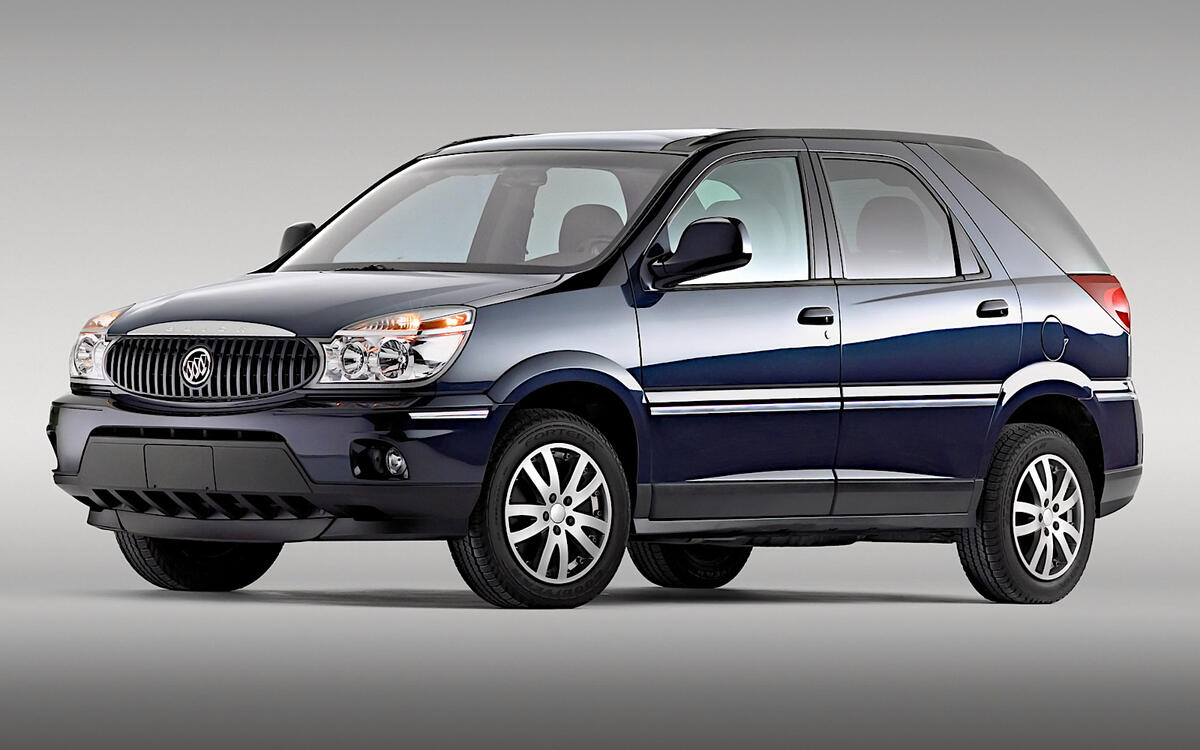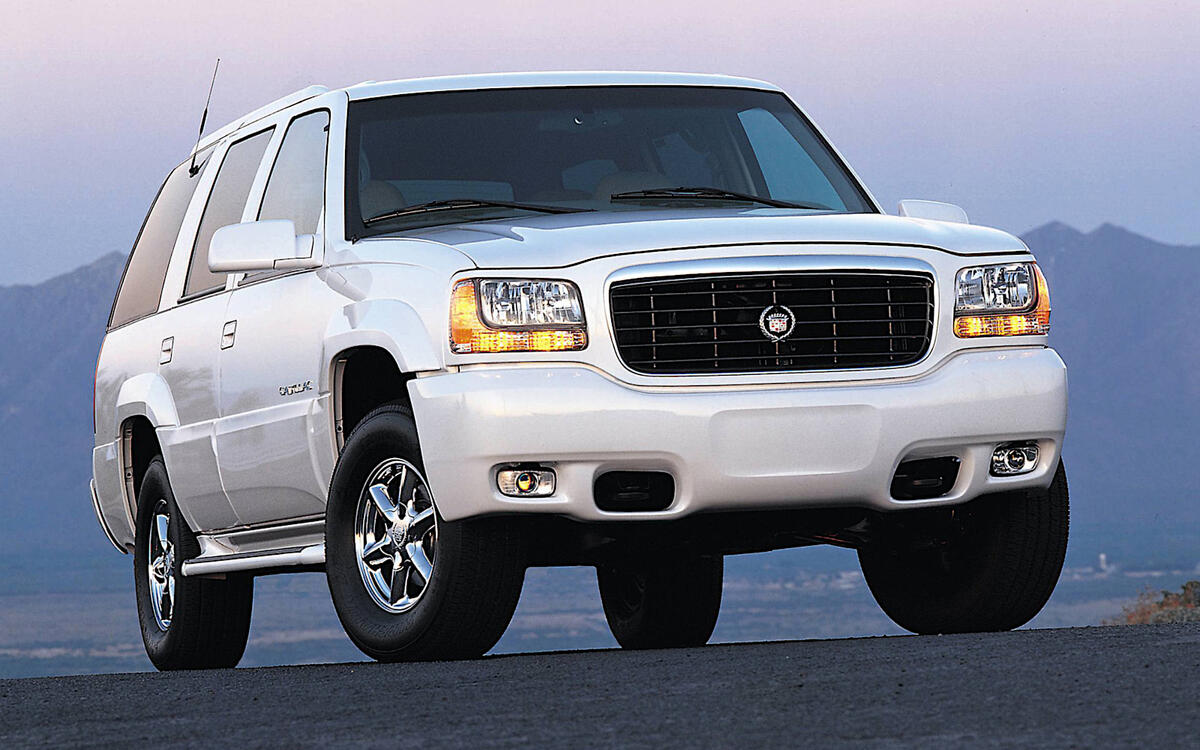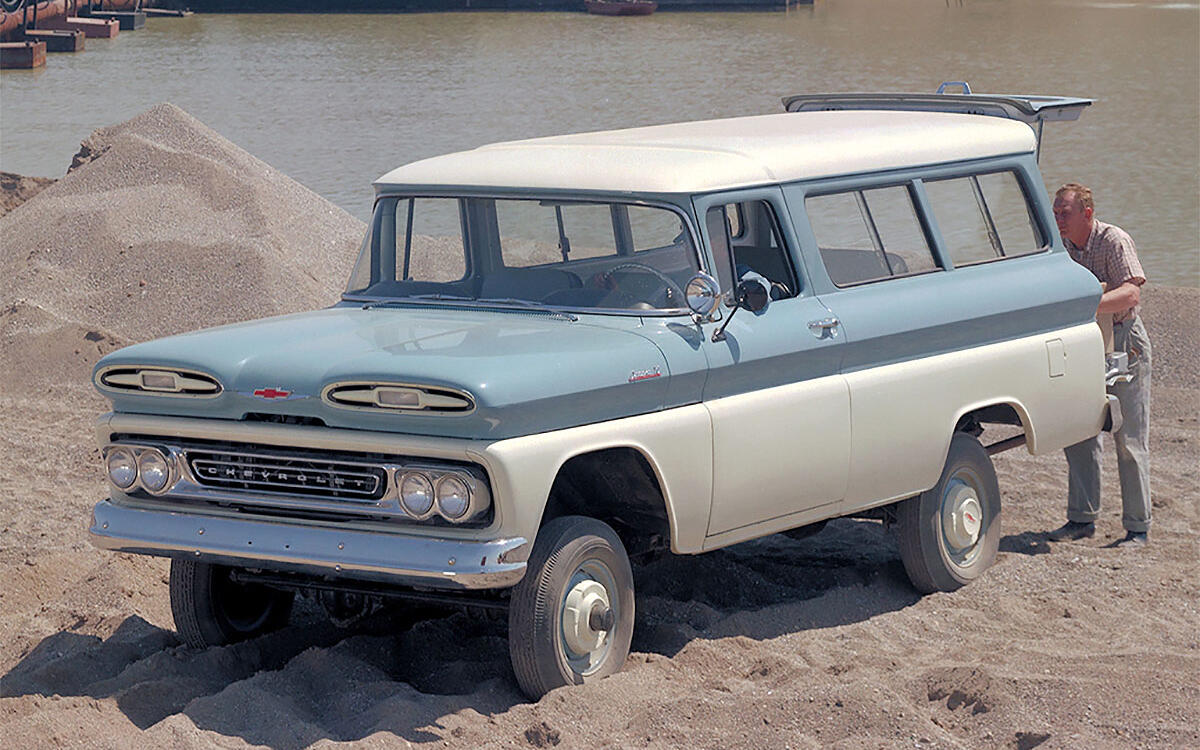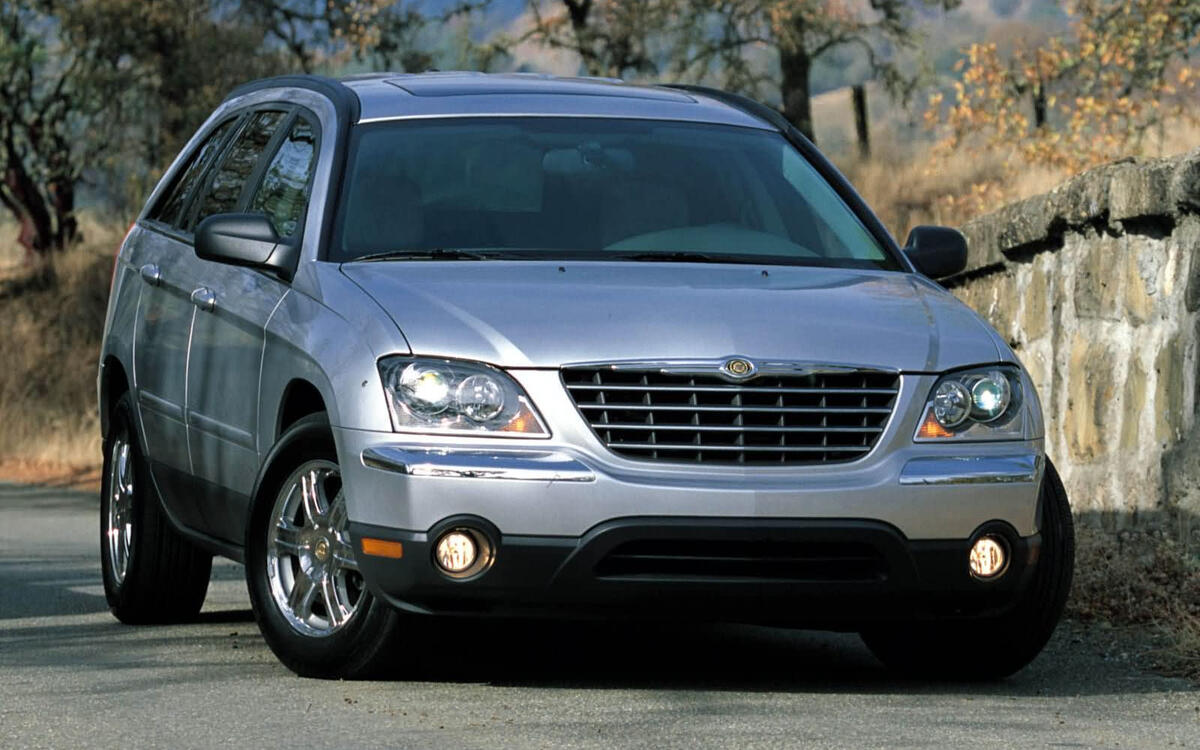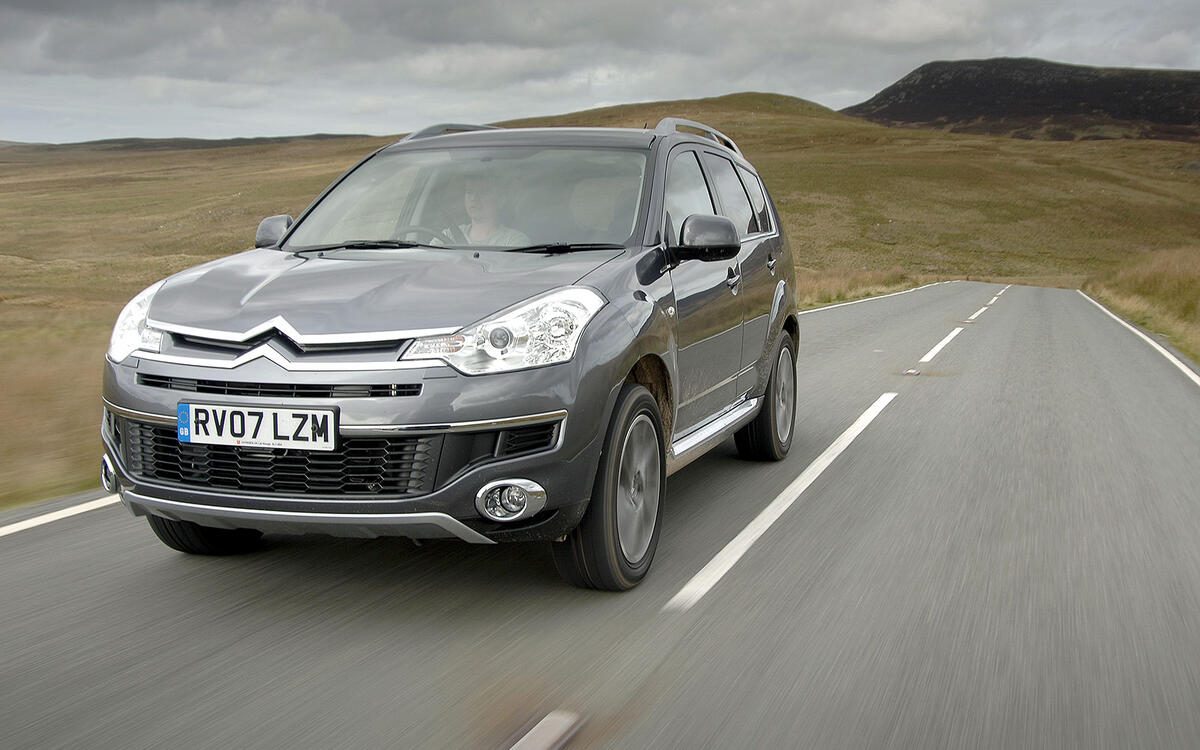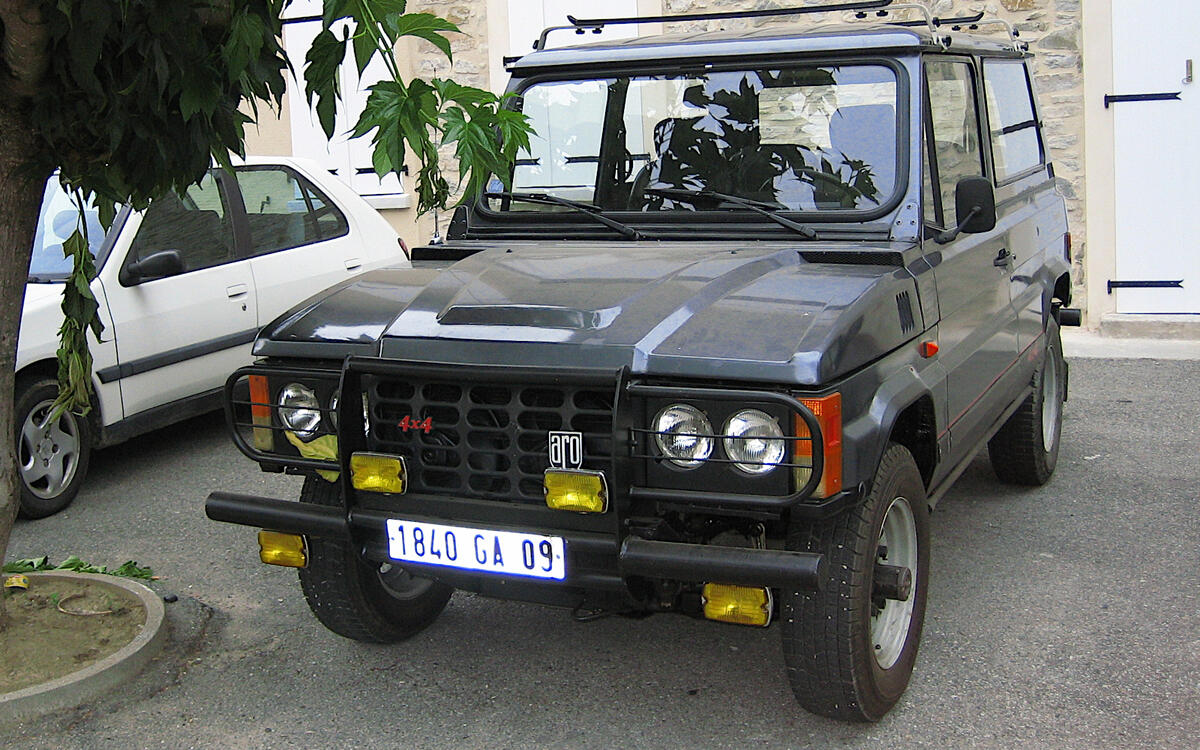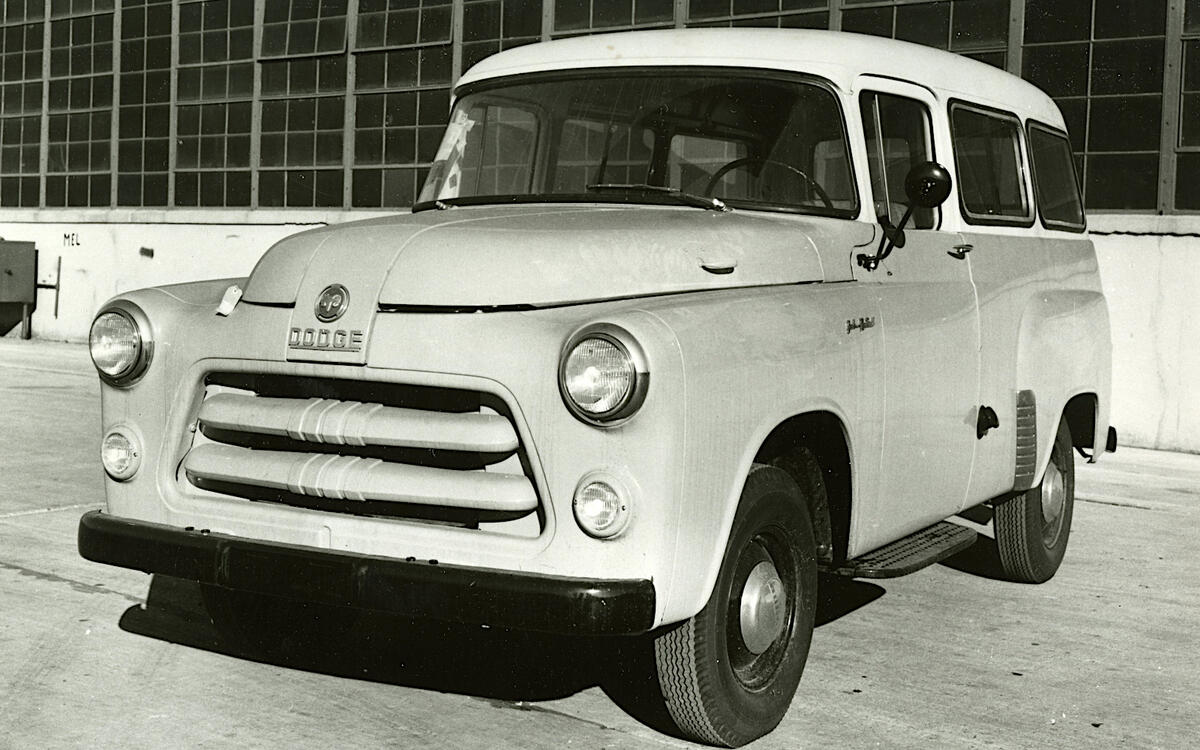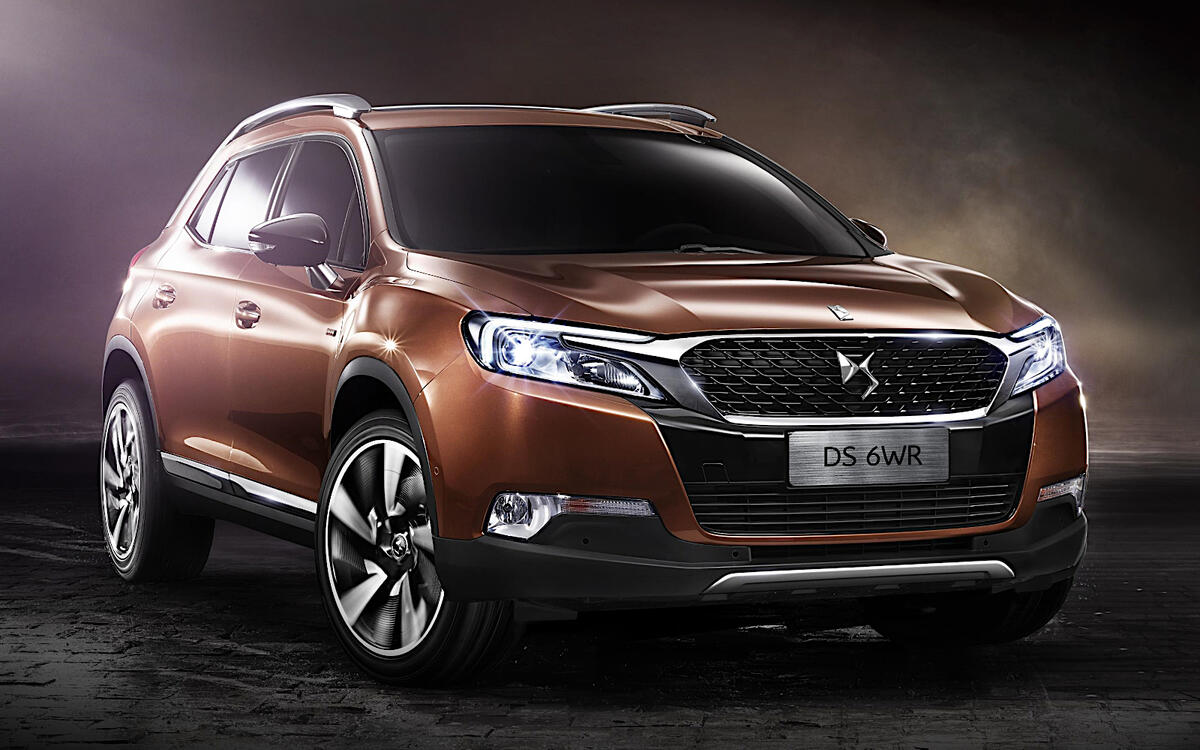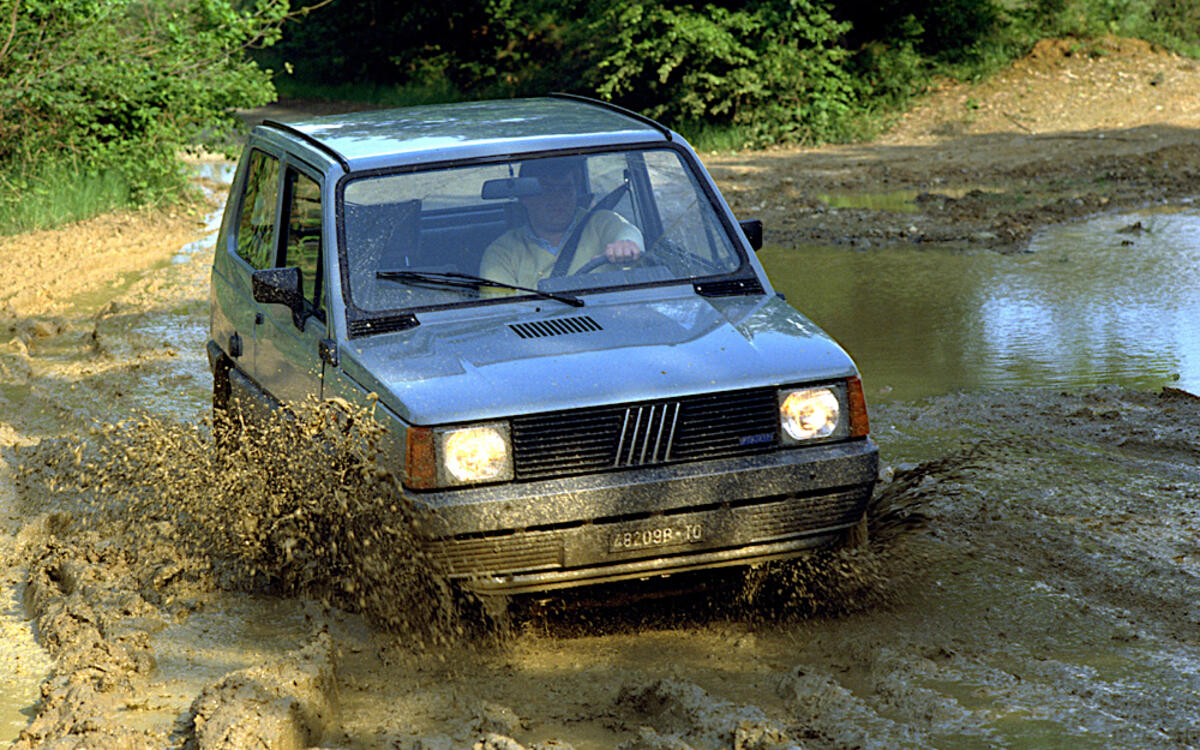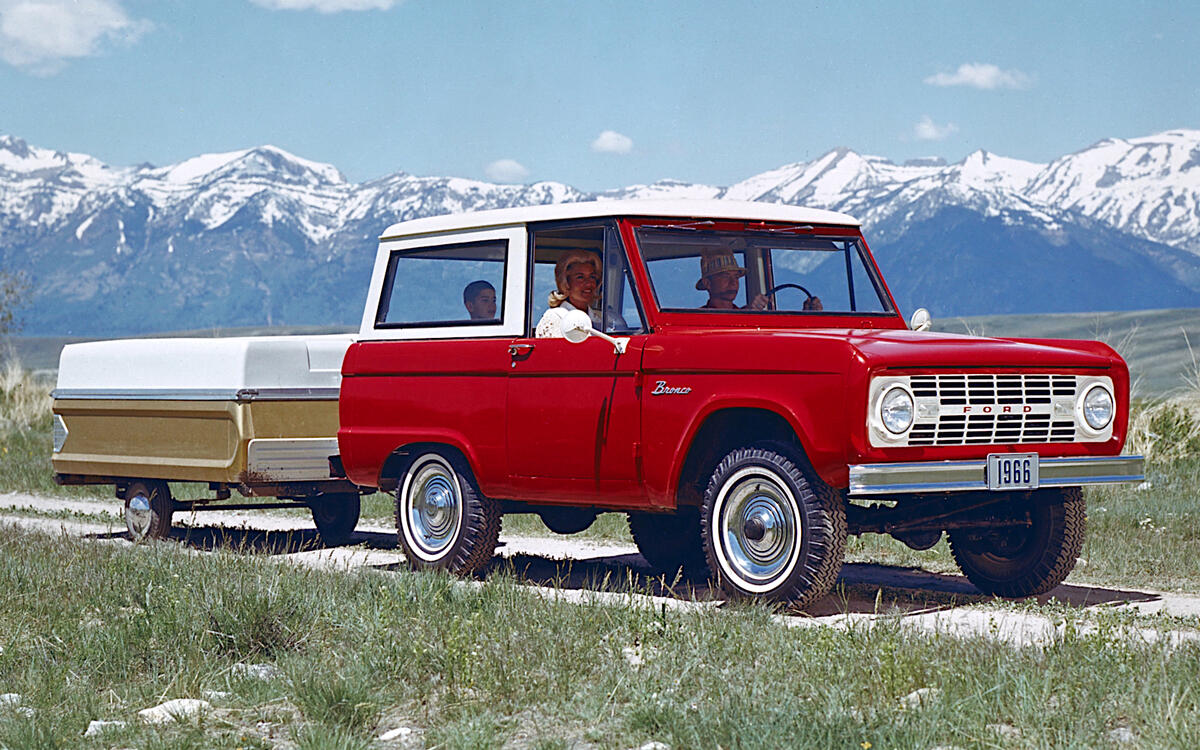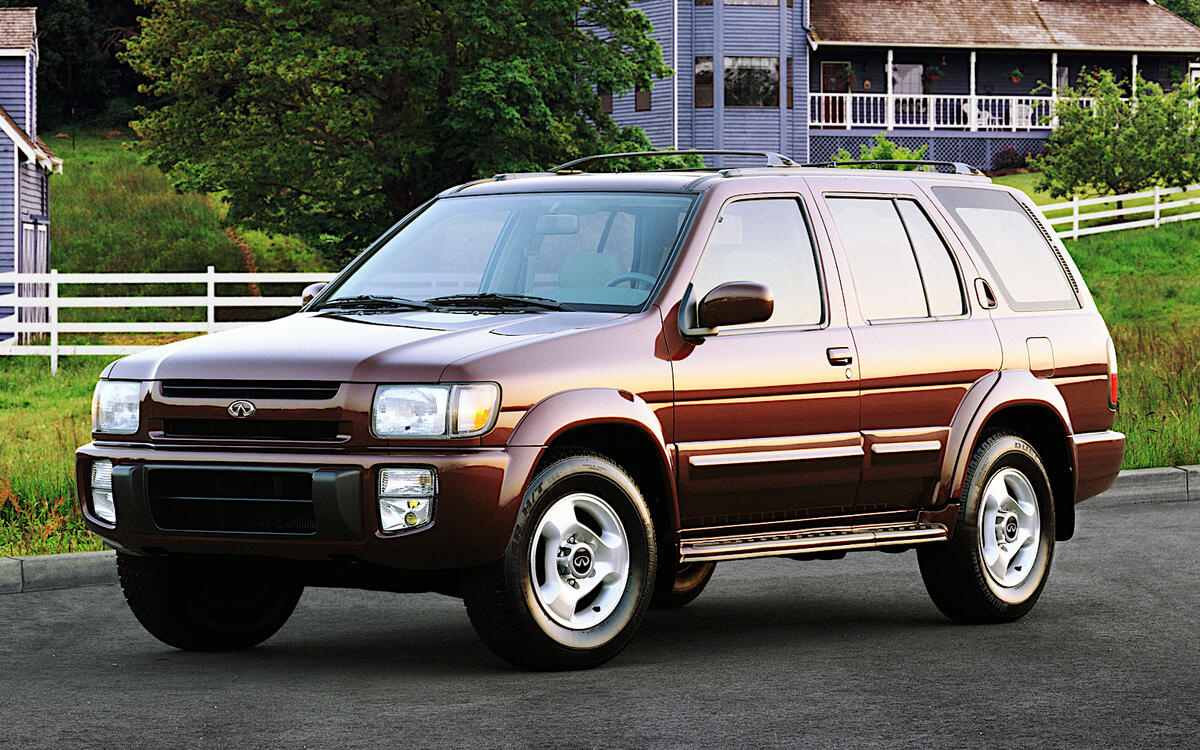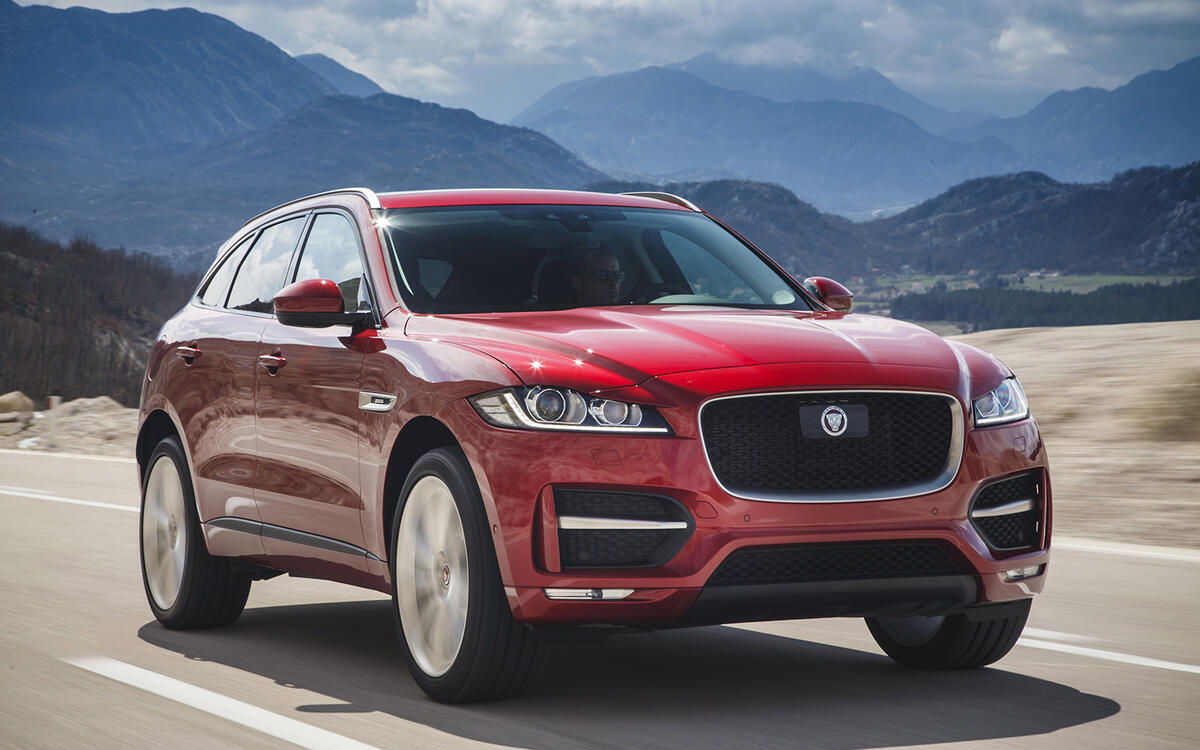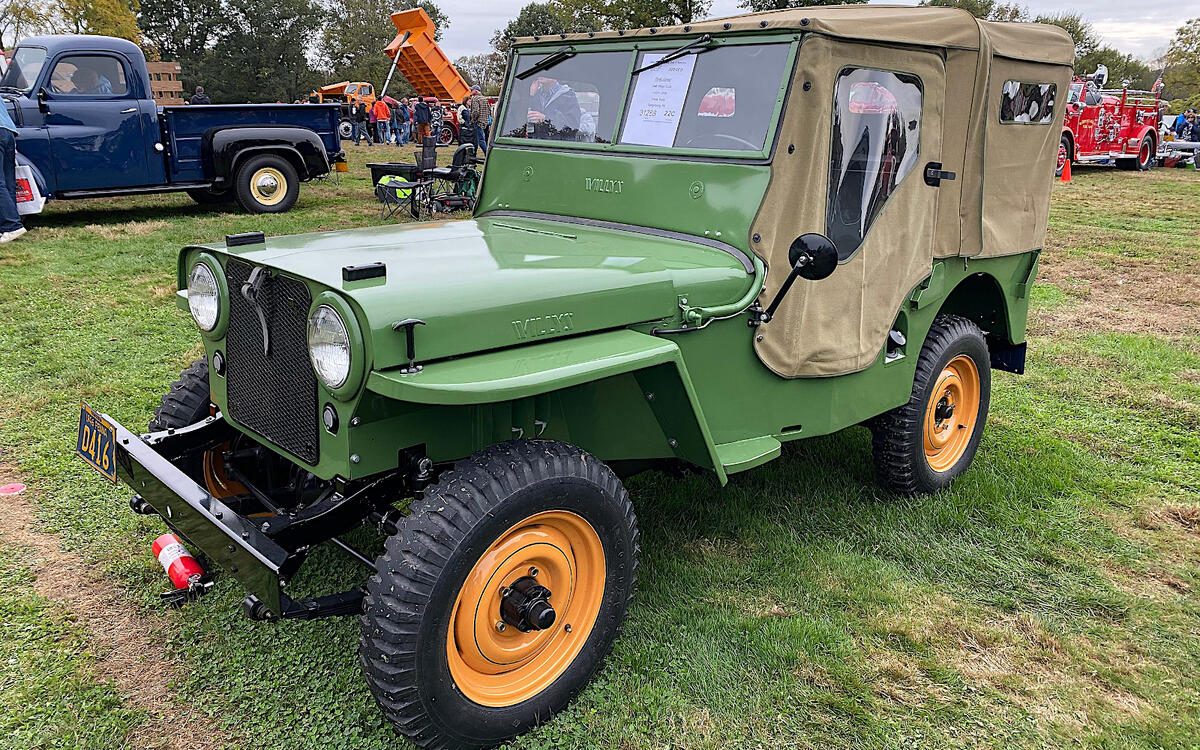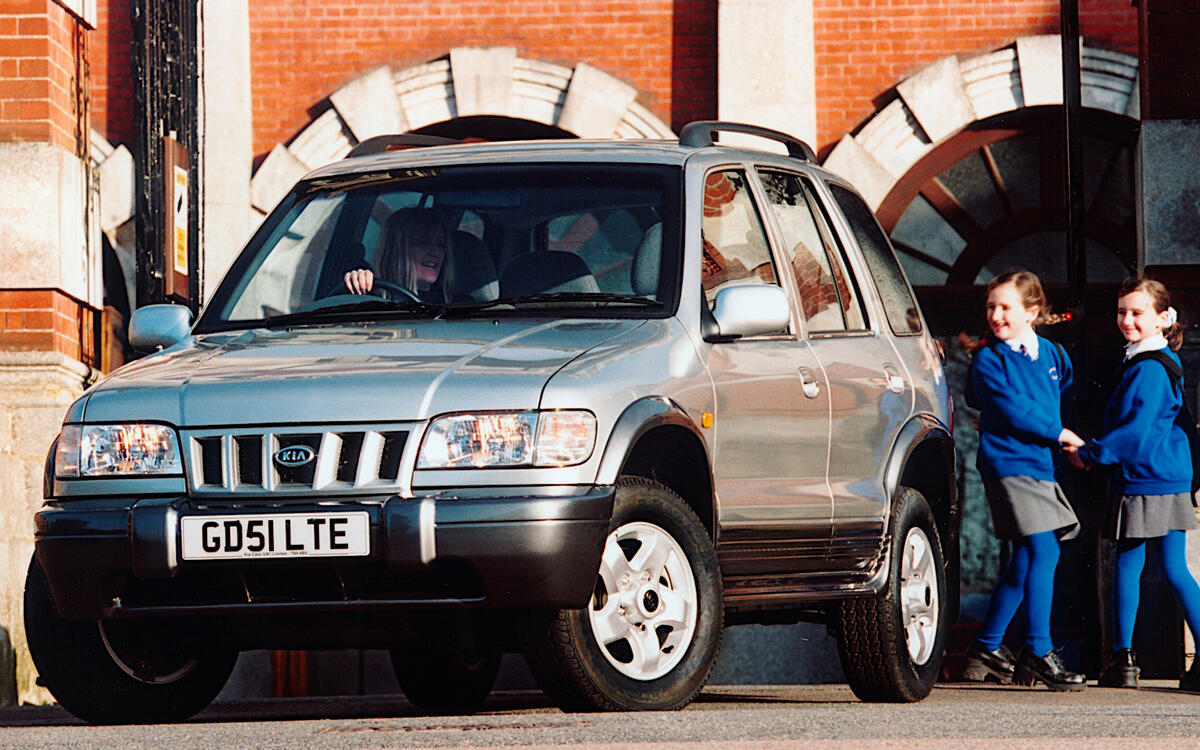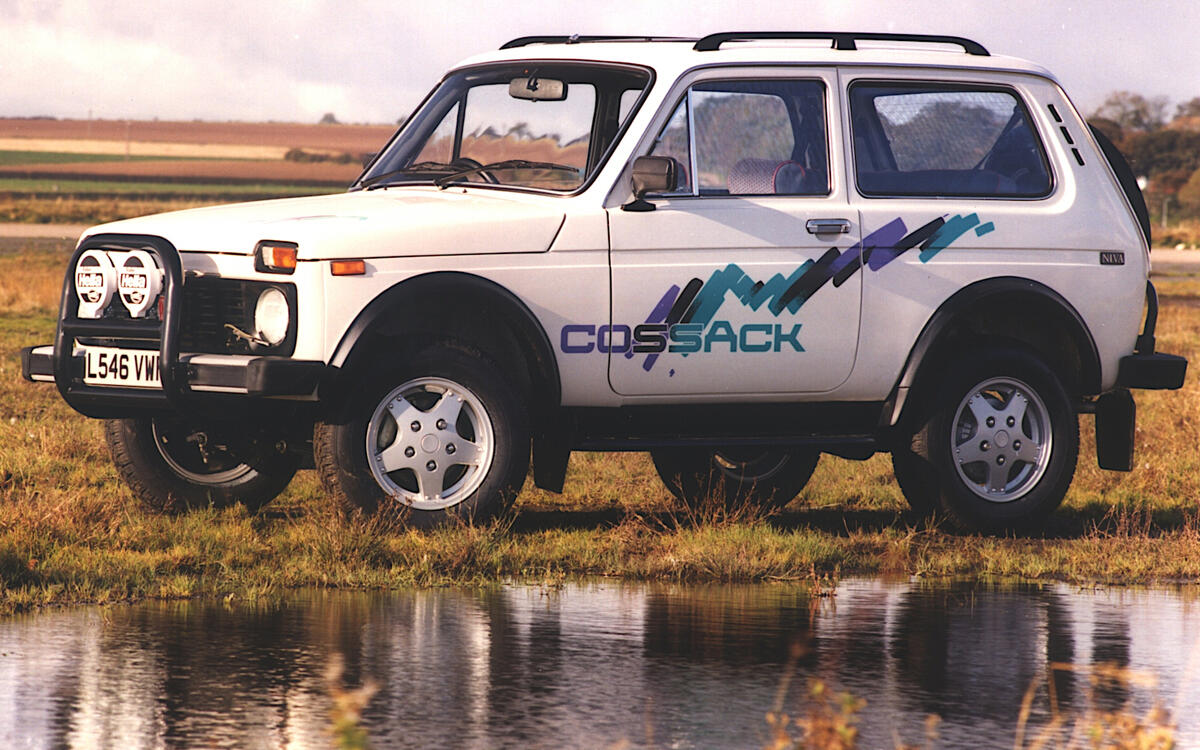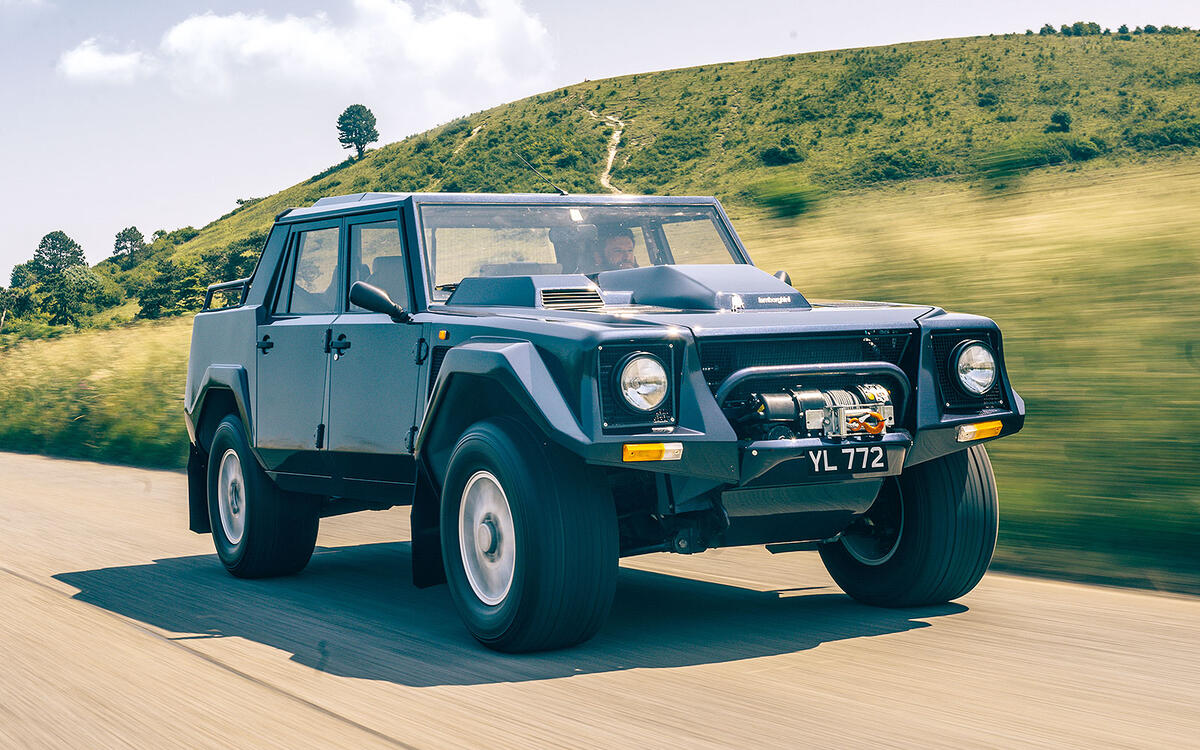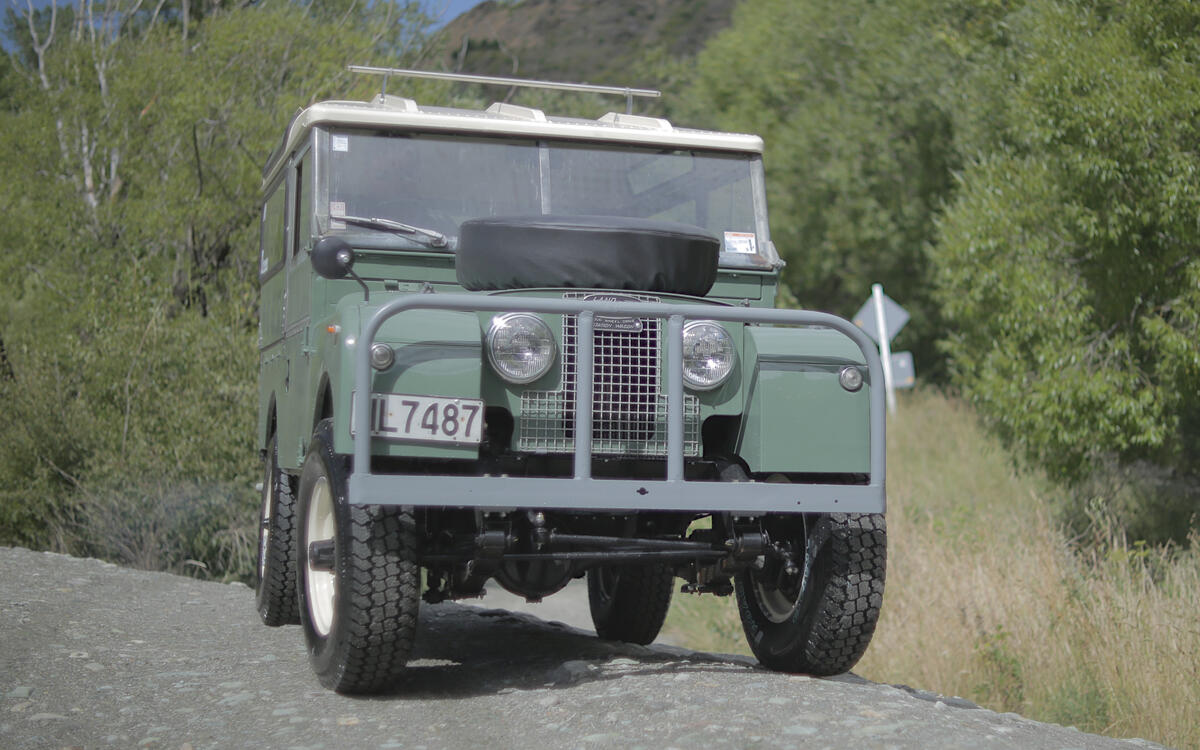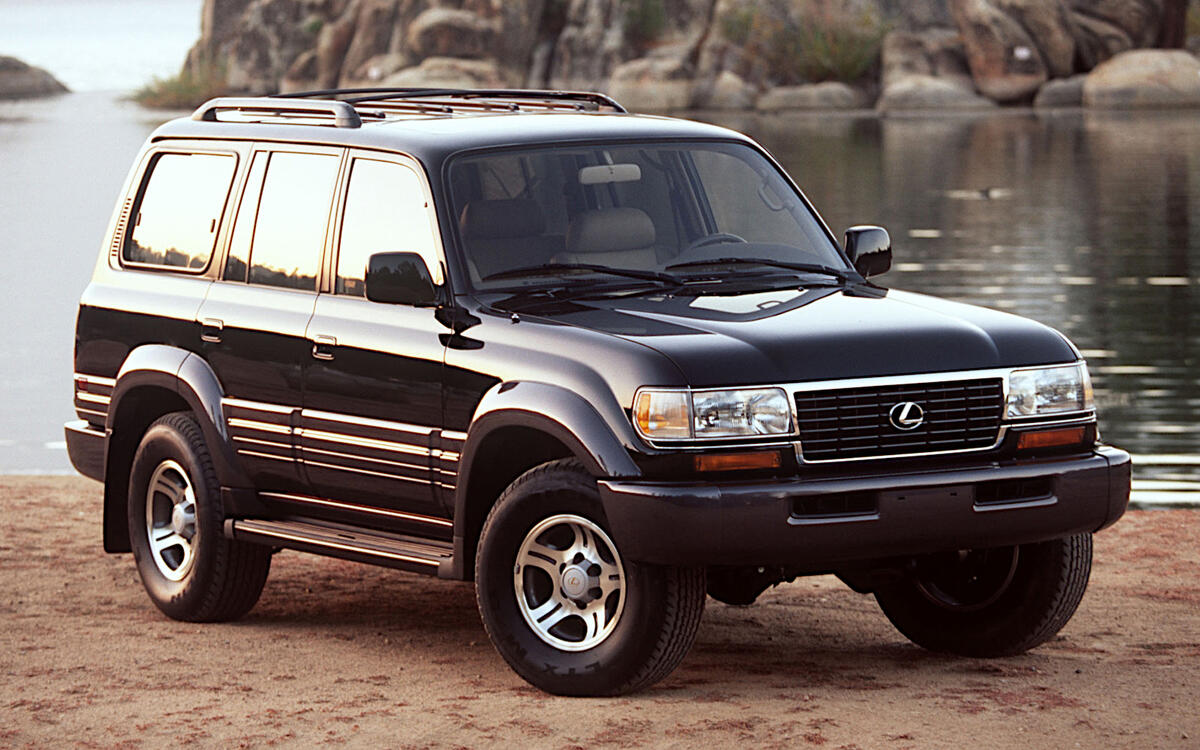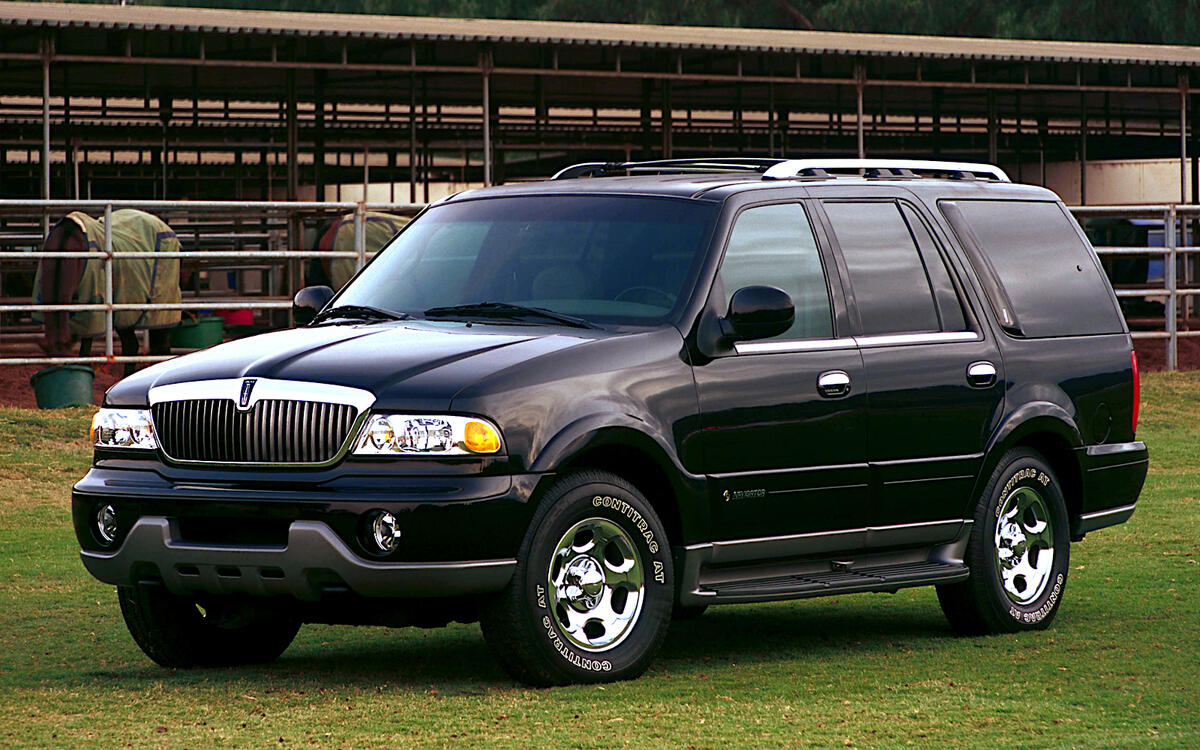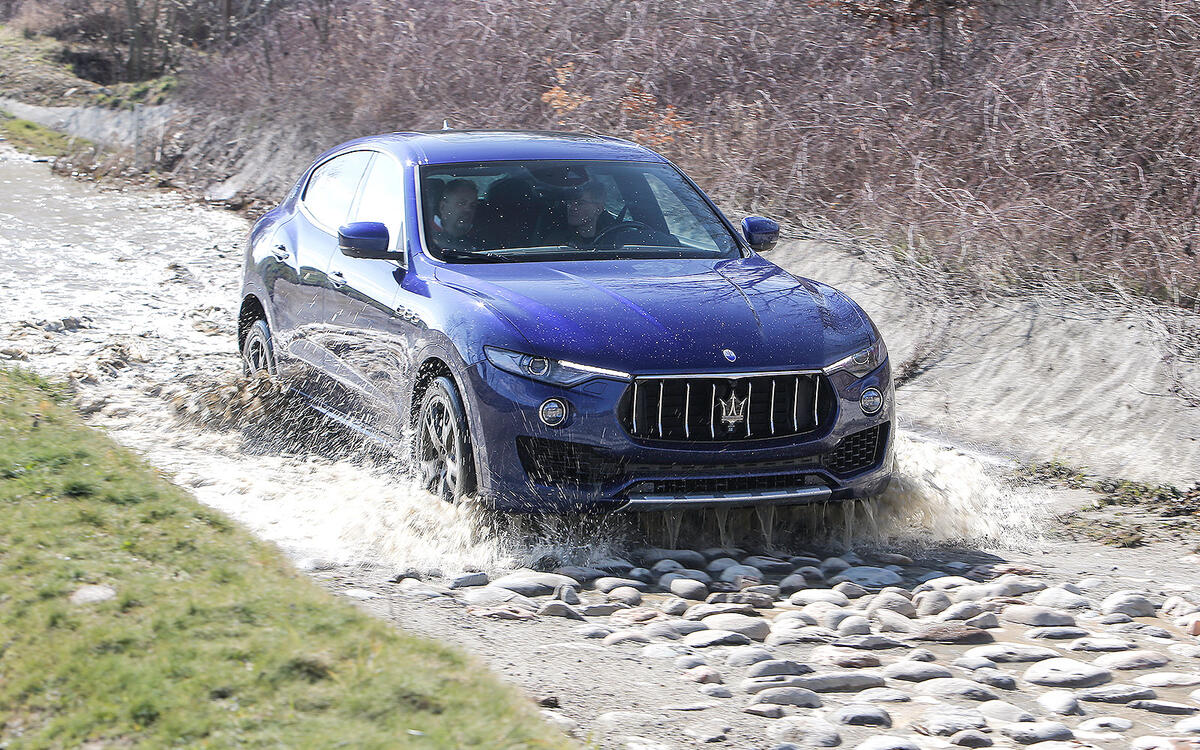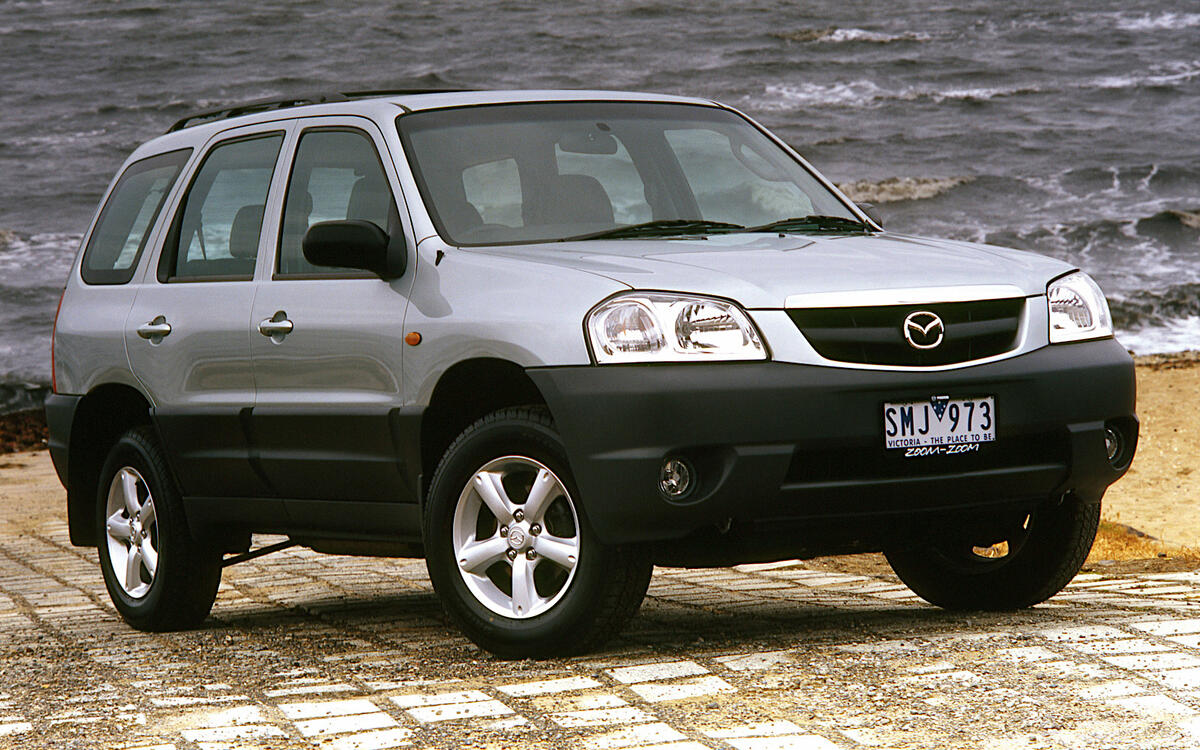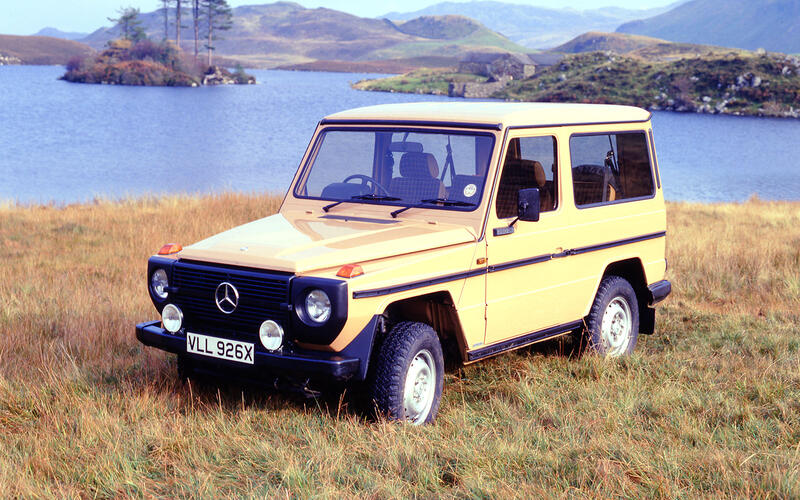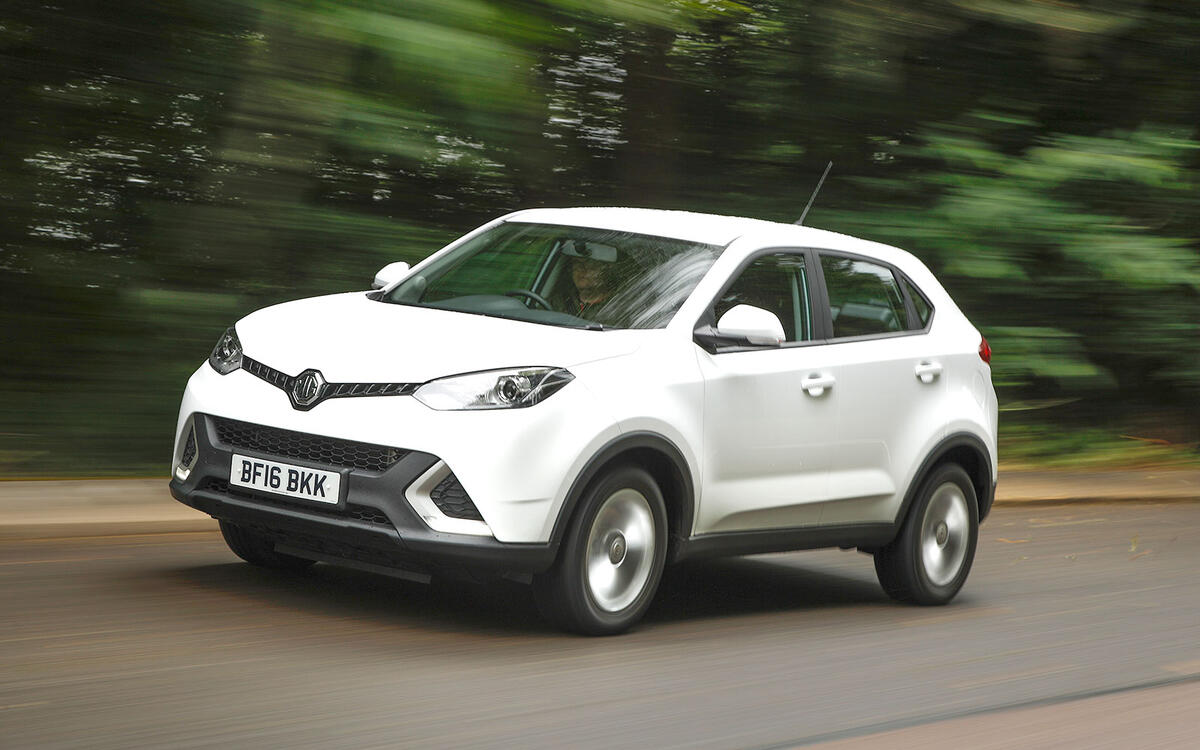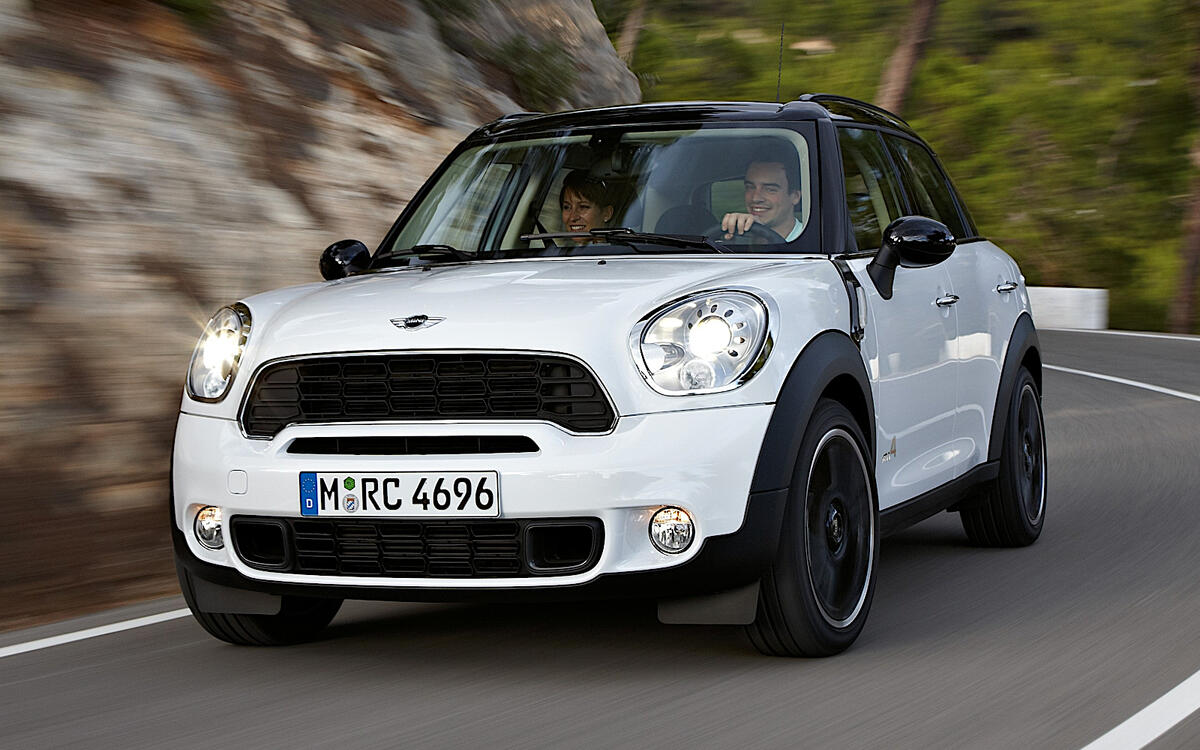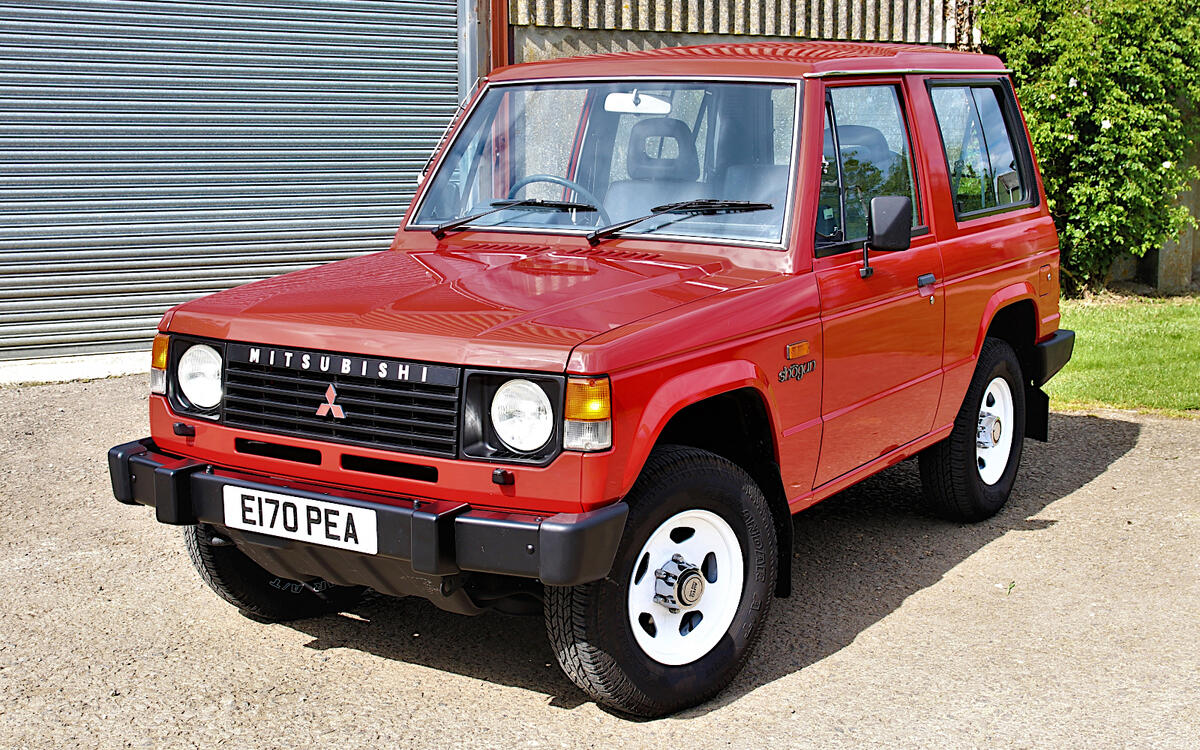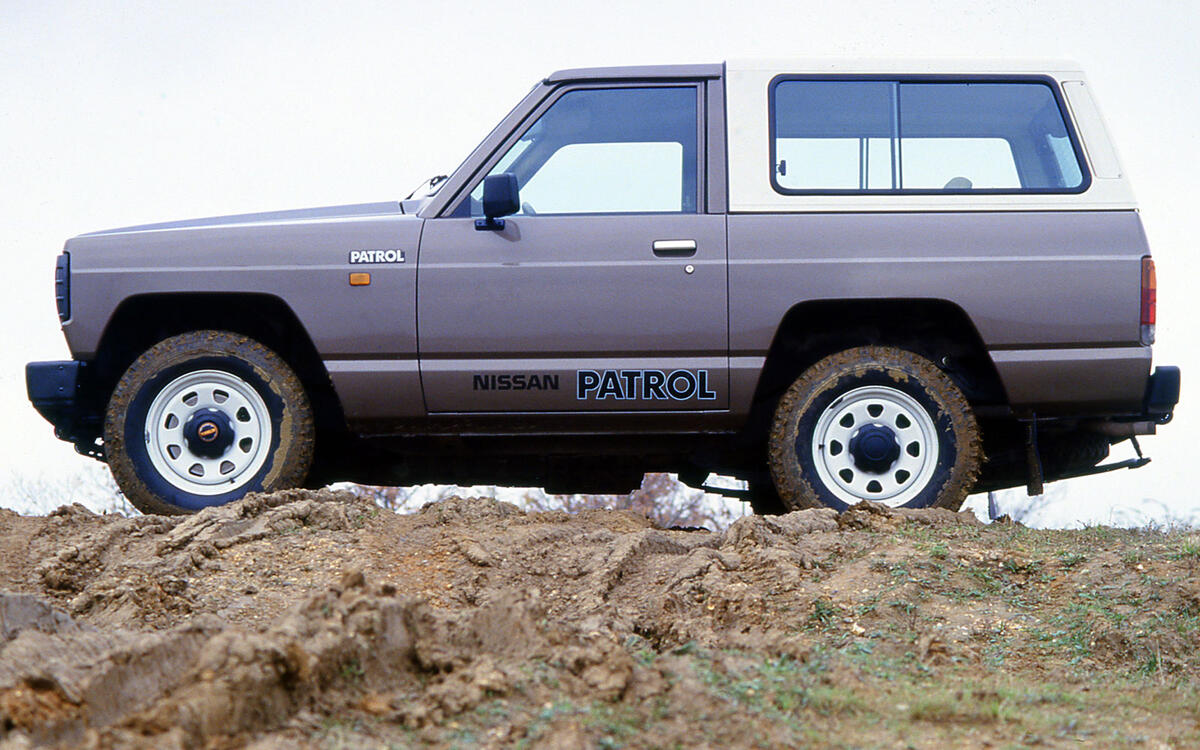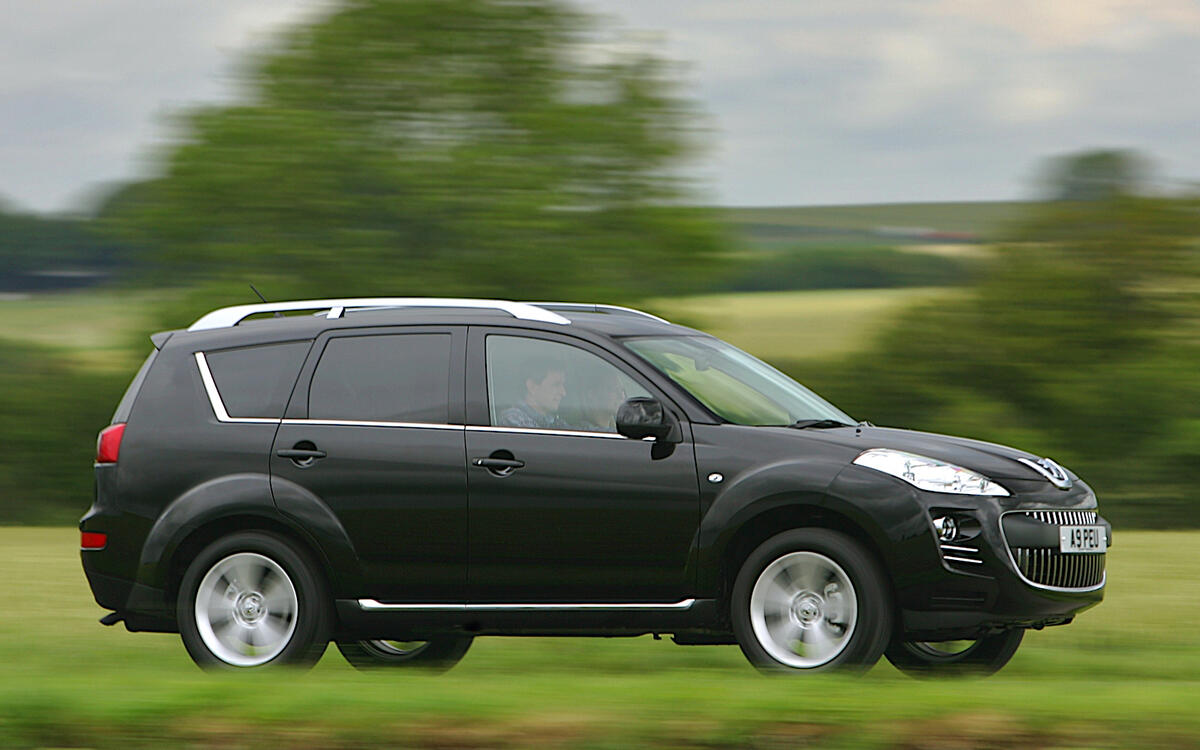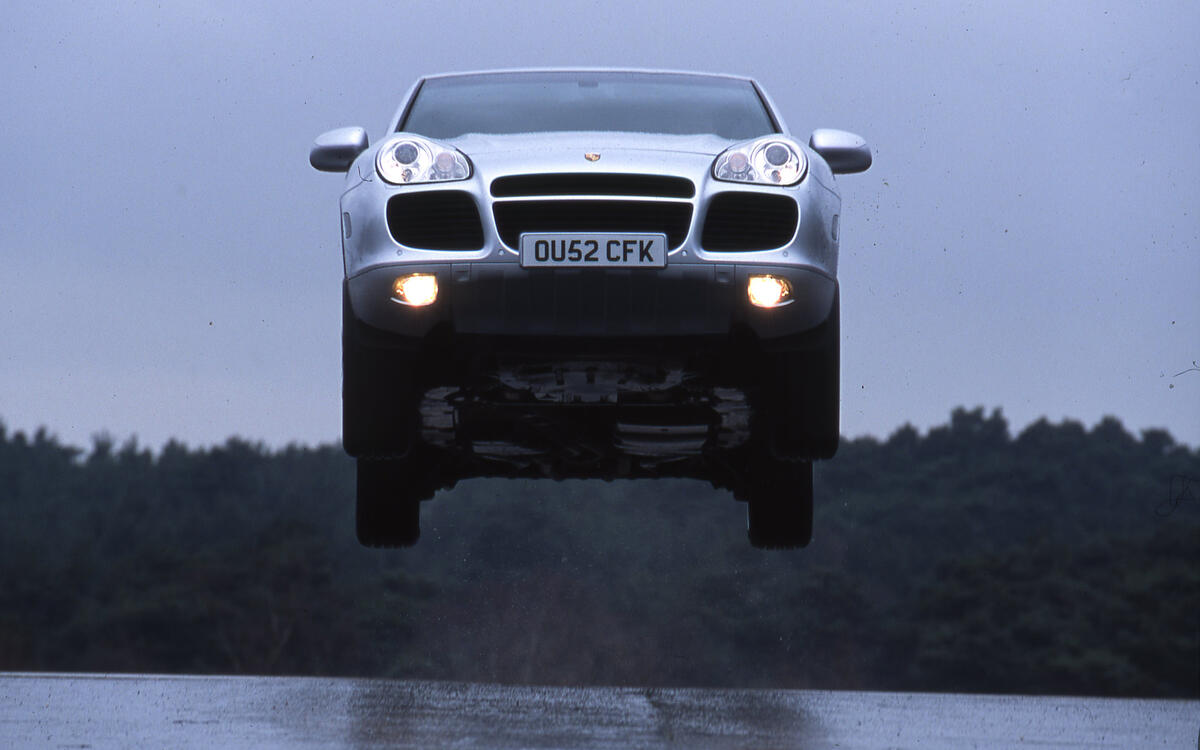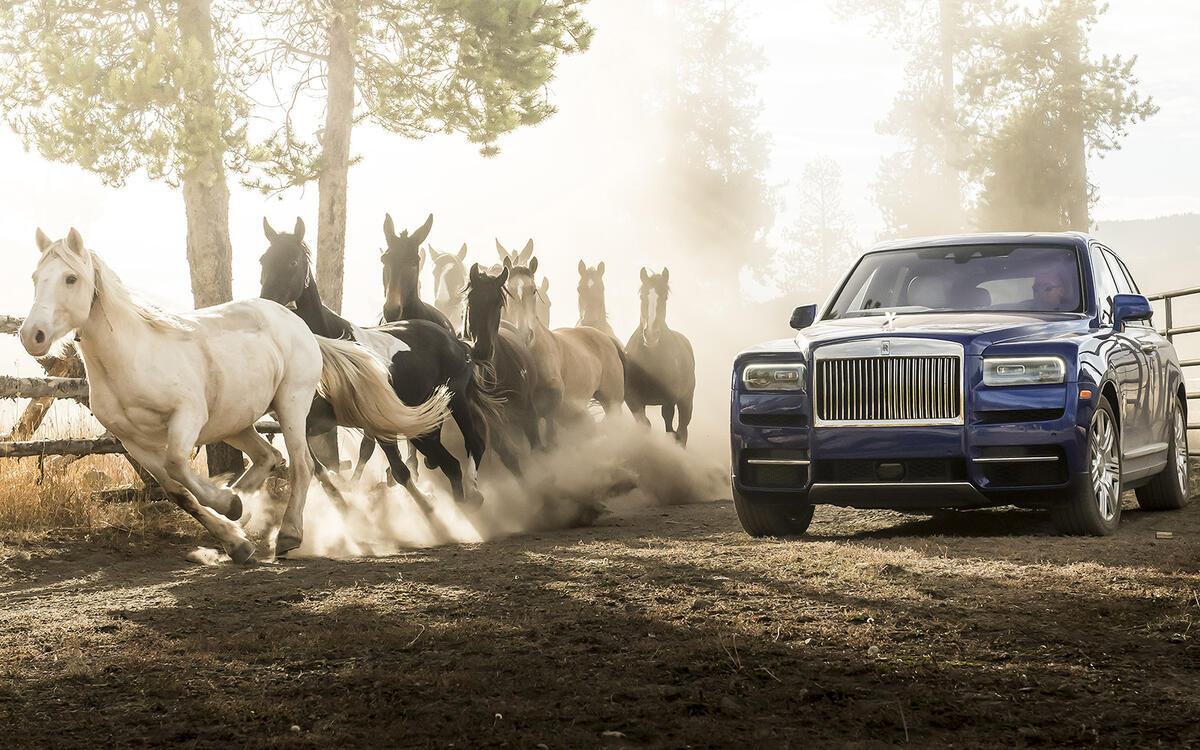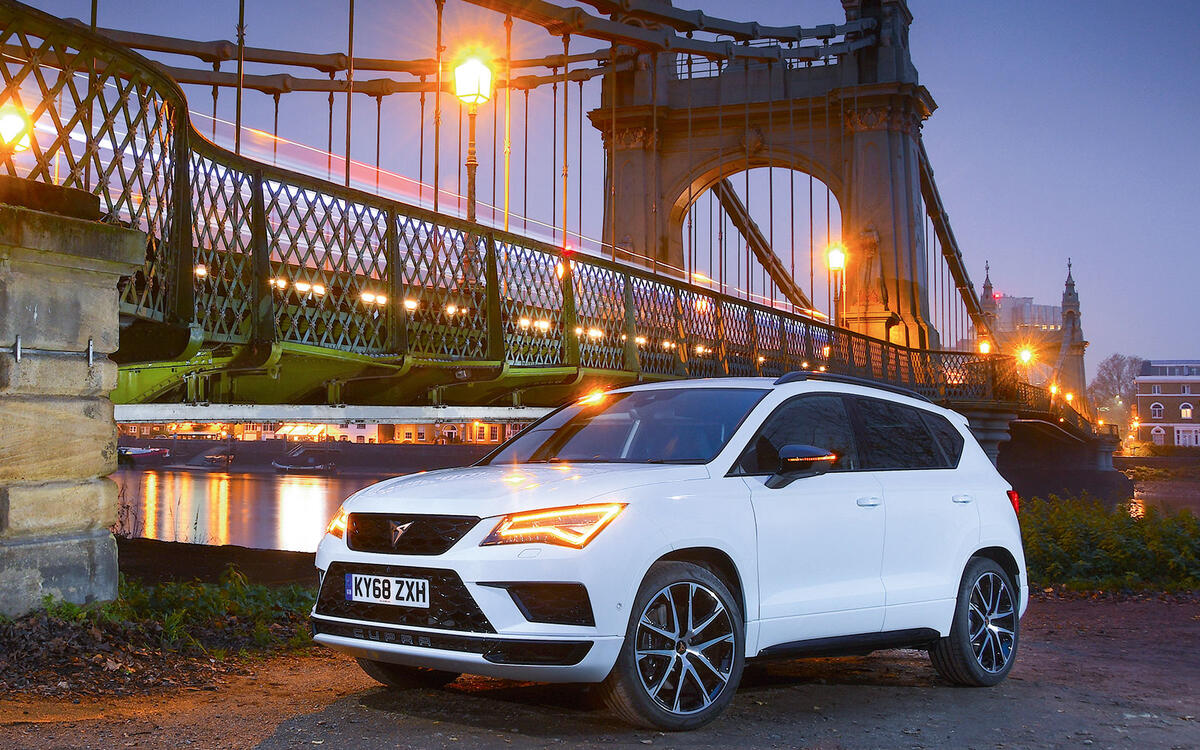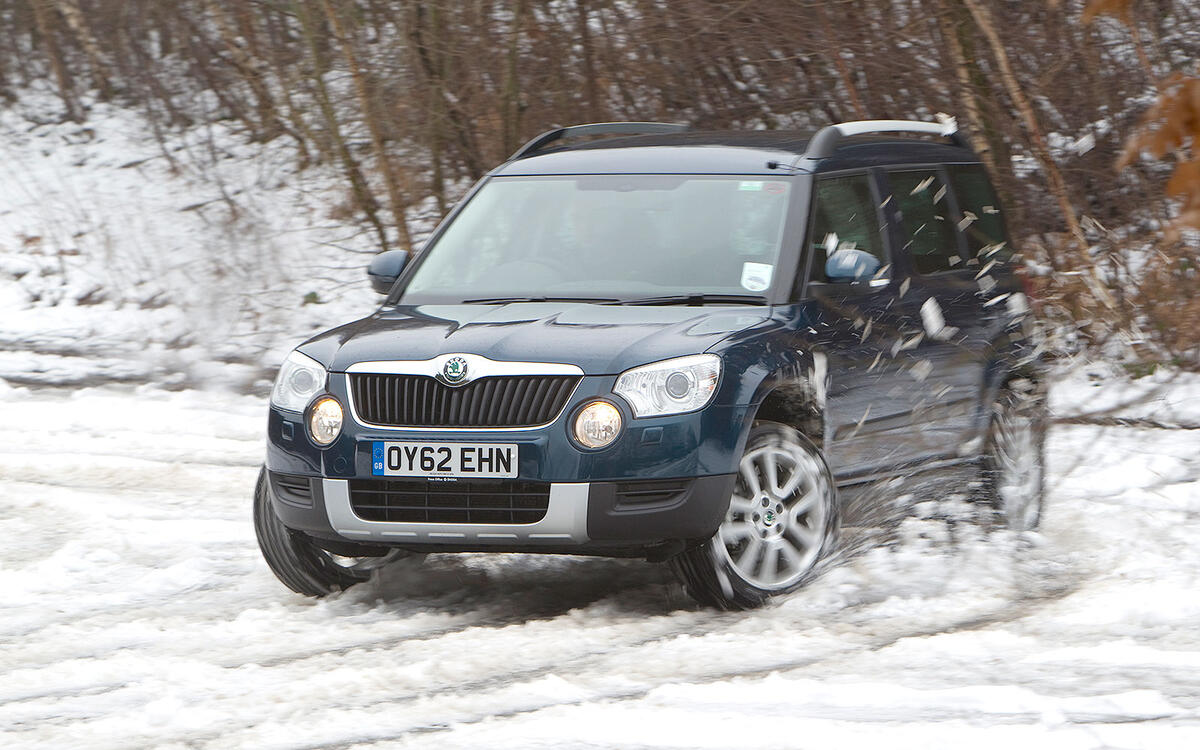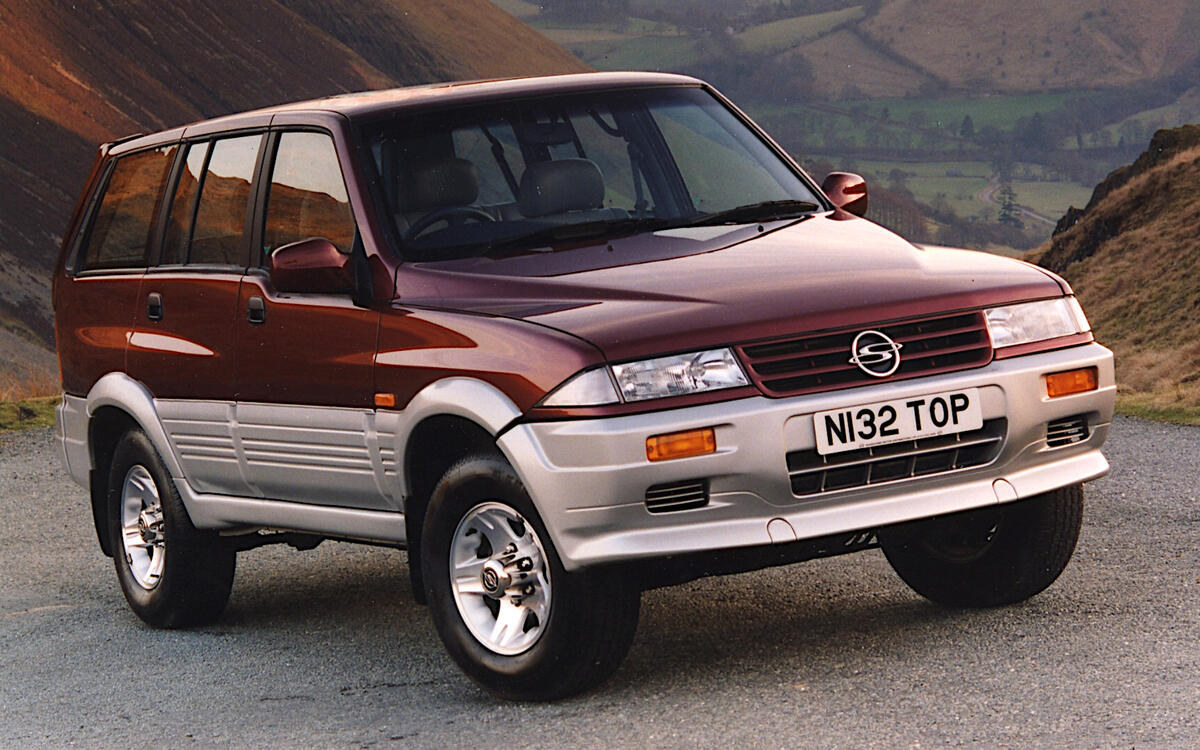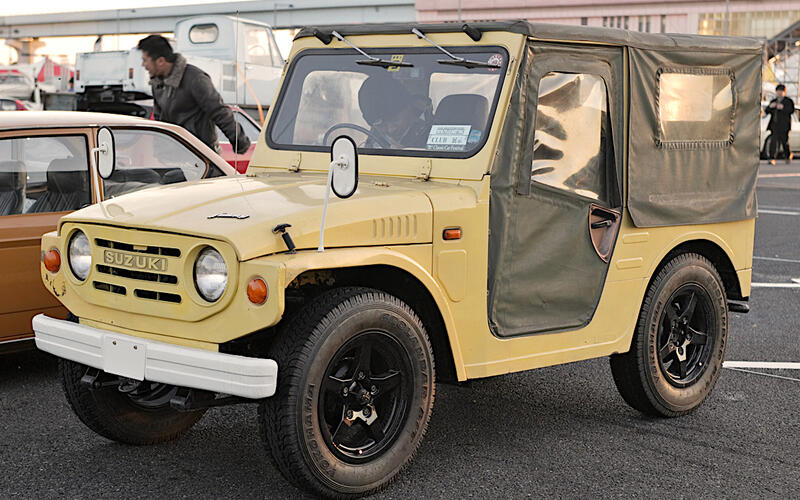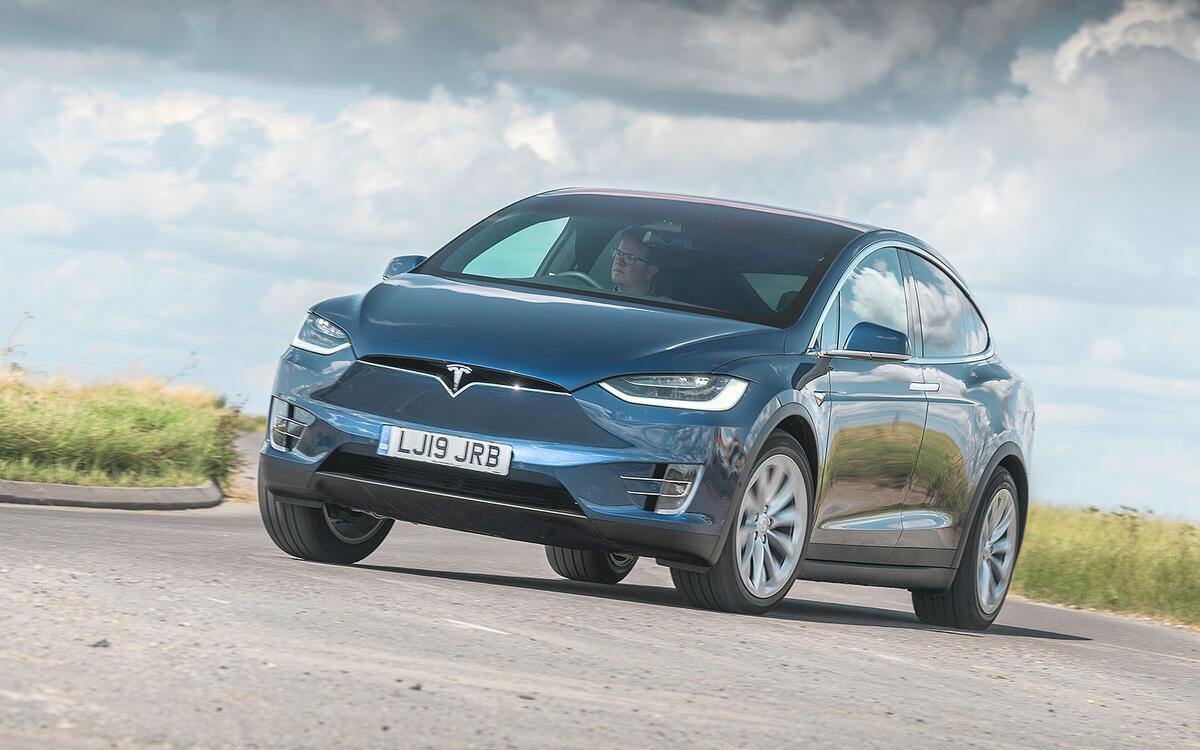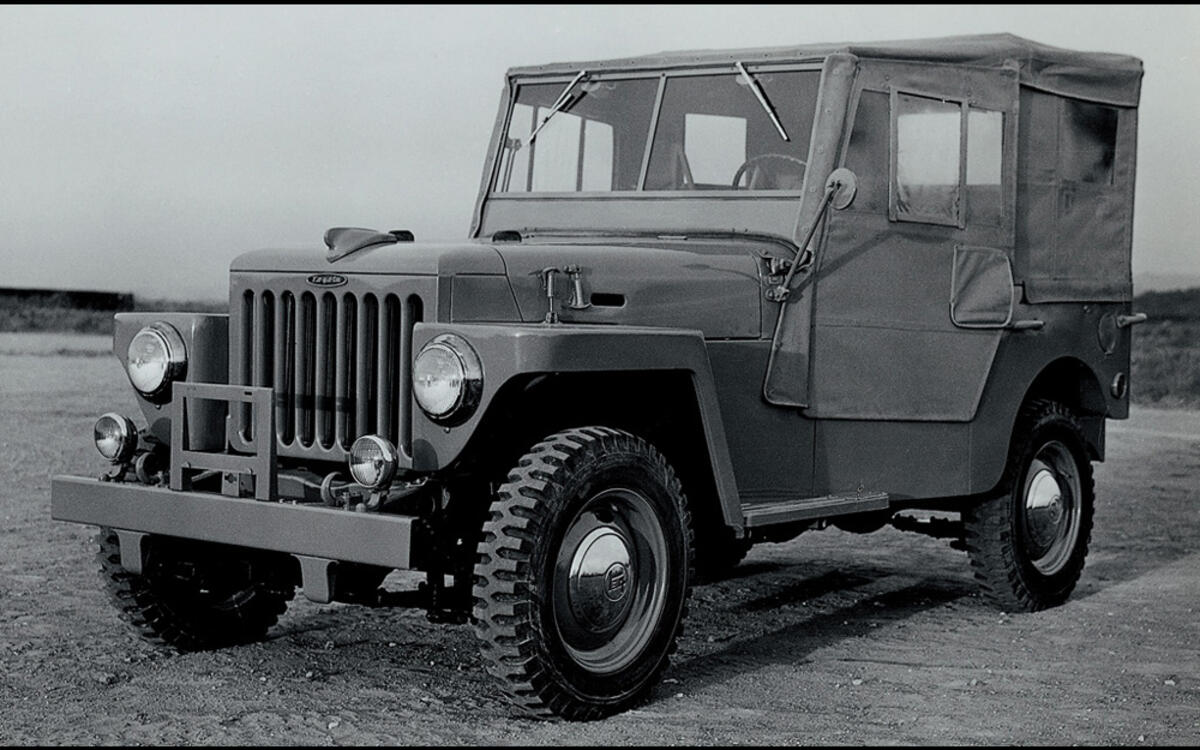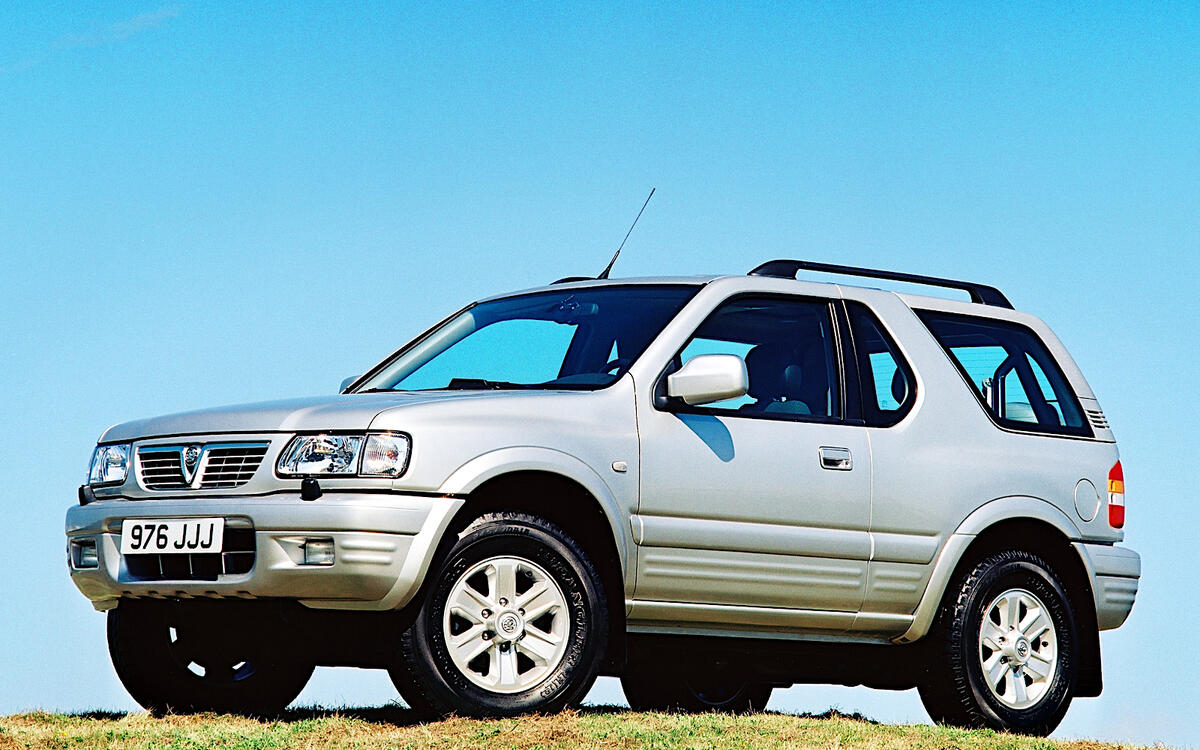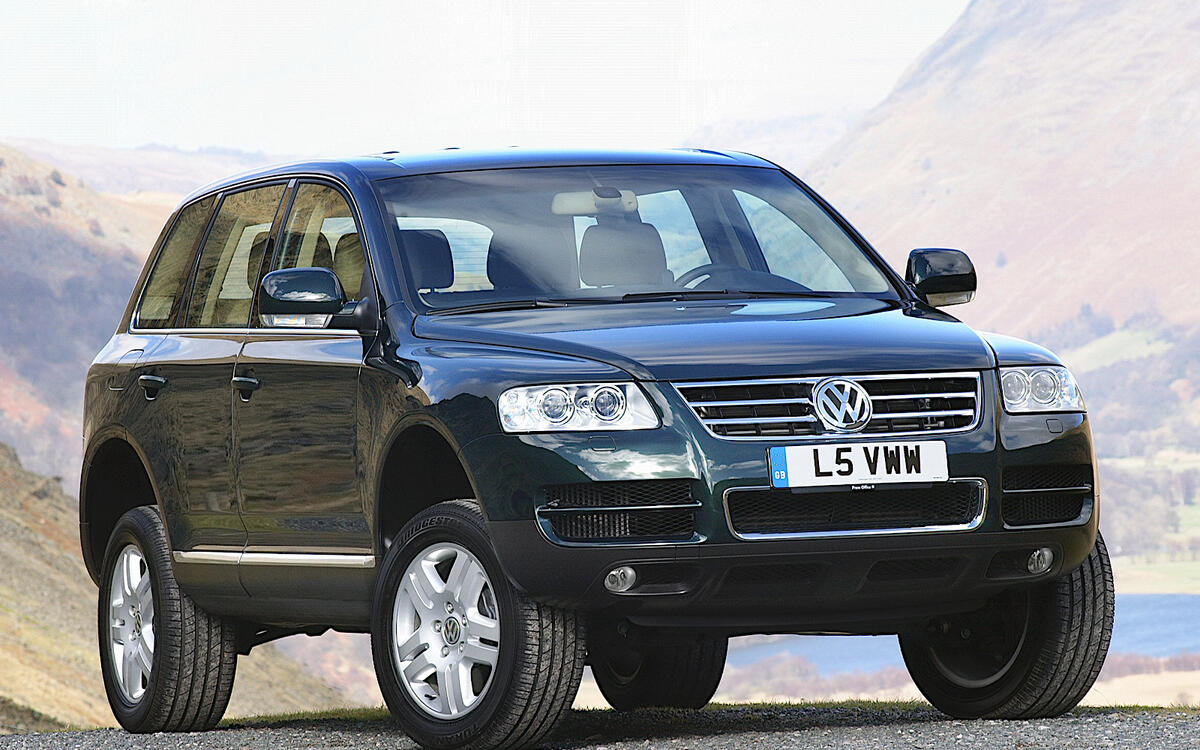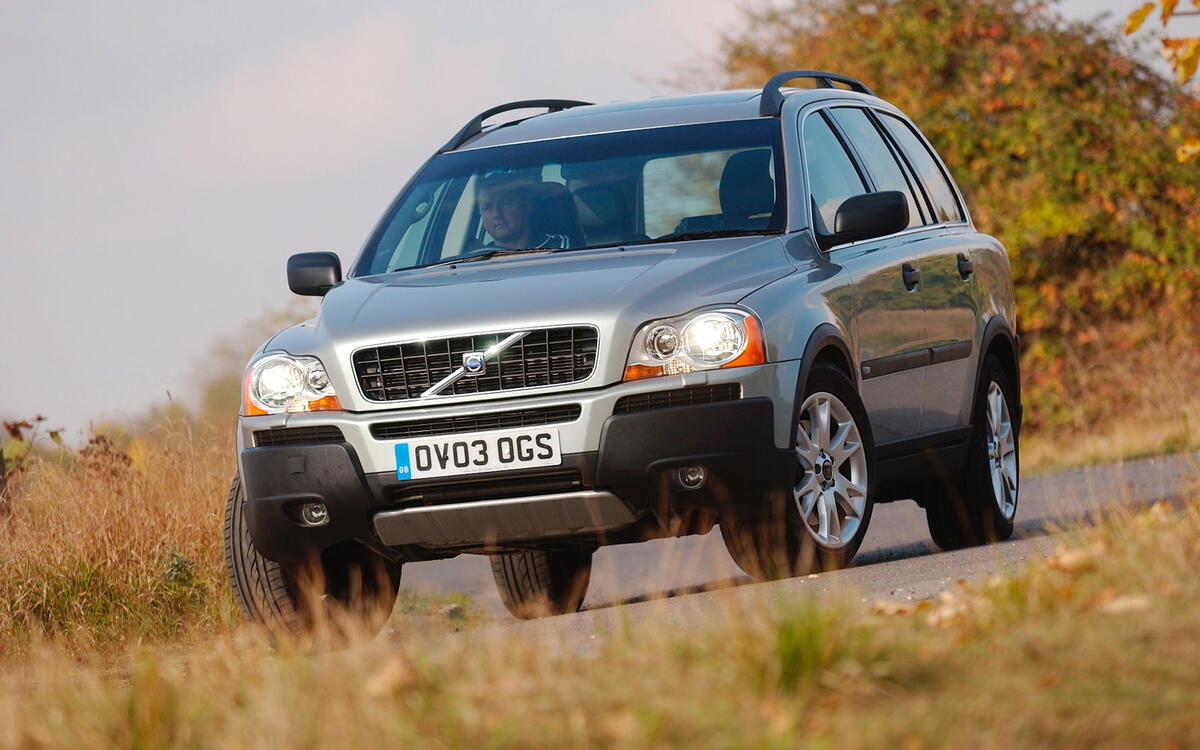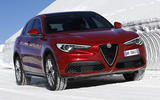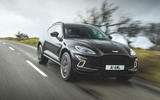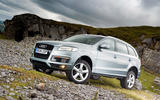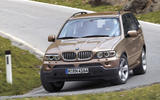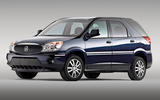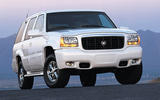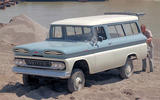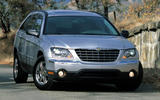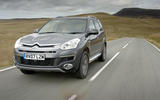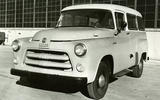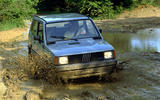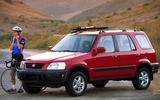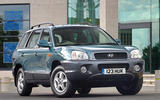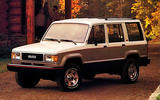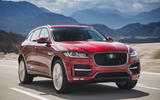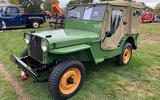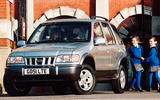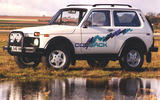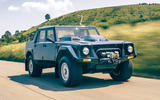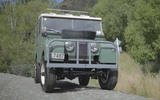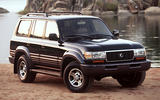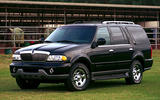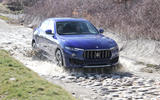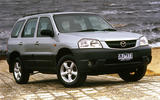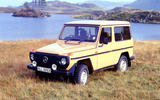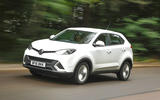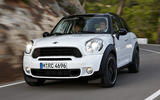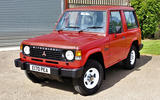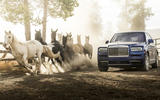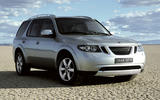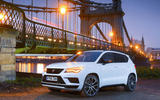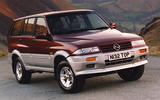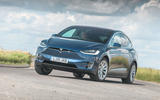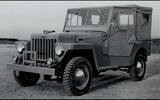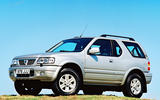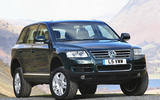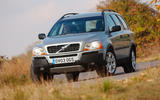 Slide of
Slide of
At the turn of the century, sport utility vehicles, or SUVs, still occupied a relatively small niche in the global car industry.
21 years on, only highly specialised manufacturers such as McLaren and Koenigsegg can get away without having at least one SUV in their ranges. In this gallery we're going to see which manufacturers have been in the SUV business for decades, and which have recently been forced into it due to customer demand. Researching this subject is complicated by the fact that there is no single, universally-agreed definition of an SUV, but that's the nature of the game.
Here, then, are the first SUVs produced by 50 manufacturers, listed in alphabetical order:
 Slide of
Slide of
Acura: MDX
The first SUV marketed by Honda's luxury brand was in fact the SLX, but this was simply a rebadged second-generation Isuzu Trooper, which seems unsatisfying.
Acura made its proper SUV debut in 2000 with the launch of the MDX, which was closely related to the Honda Pilot and shared a platform with several other Honda models. The fourth-generation MDX went into production in January 2021, and almost immediately became the best-selling premium three-row crossover in the US.
 Slide of
Slide of
Alfa Romeo: Stelvio
Alfa Romeo is one of many manufacturers on this list who would not have been suspected of venturing into SUV territory in the recent past. In fact, Alfa produced the Jeep-like Matta in the early 1950s, but only in very small numbers, and mostly for military use.
The Stelvio is a true crossover SUV in the modern sense, and has been built in large numbers since 2016. The Quadrifoglio version is one of the fastest SUVs in the world, with a 2.9-litre twin-turbo V6 engine which produces slightly more than 500bhp.
 Slide of
Slide of
Aston Martin: DBX
Never a company to rush into things with unseemly haste, Aston Martin left a gap of well over a century between building its first car and entering the SUV market. The DBX is one of the very small number of road vehicles ever to have been built in Wales.
It is also even more powerful than the Alfa Romeo Stelvio Quadrifoglio, with a maximum output of 542bhp from its 4.0-litre twin-turbo V8 engine, which is supplied by Mercedes-Benz. In 2021, the DBX became the official medical car for all rounds of the F1 World Championship.
 Slide of
Slide of
Audi: Q7
The Audi Q7 is closely related to the Porsche Cayenne and Volkswagen Touareg, but went into production three years later, towards the end of 2005. From 2008 to 2012, it was available with a 6.0-litre V12 TDI turbo diesel which produced just under 500bhp. This engine has never been fitted to any other production car.
Now well into its second generation, the Q7 was the first Audi SUV, and the largest by some margin until the launch of the similarly-sized Audi Q8 in 2018. We have spotted a still larger SUV, to be called Q9, out testing, and we should see that released in 2022.
 Slide of
Slide of
Bentley: Bentayga
The Bentayga made its public debut at the 2012 Geneva Show in the form of the EXP 9 F concept. For the production version, Bentley considerably toned down the styling, which had been greeted with dismay in some quarters.
The Bentayga was unveiled in Frankfurt in 2015, and went into production a few months later. The available engines included V8 and W12 petrol units and a V8 diesel, all twin-turbocharged. A hybrid version with a 3.0-litre single-turbo V6 engine went on sale in 2018.
 Slide of
Slide of
BMW: X5
Among the late adopters, BMW has been in the SUV game for a relatively long time. The first-generation X5 (of four to date) made its debut in 1999. Several high-performance models have been developed since then. All of them have been named X5 M.
Every generation of X5 has been built at the BMW Spartanburg plant in Greer, South Carolina, though other facilities around the world have also been used. Spartanburg is the only BMW factory in North America, and produces around 450,000 SUVs a year.
 Slide of
Slide of
Buick: Rendezvous
Buick's first SUV went on sale in 2001 and survived for six years. Although it had a fairly short career, the Rendezvous was a successful model - notably more so, in fact, than its corporate cousin, the Pontiac Aztek, which was built alongside the Rendezvous at the GM Ramos Arizpe factory in Mexico.
Since both vehicles were designed well for their purpose, the reason for the difference in their fortunes is clear. The Rendezvous's styling was quirky in some ways but mostly conventional, while that of the Aztek verged on the bizarre.
 Slide of
Slide of
Cadillac: Escalade
Cadillac entered the SUV market with a bang in 1998 when it put the original Escalade on sale. This and the four subsequent versions have been technically related to other, cheaper SUVs marketed by Chevrolet and GMC.
Generations two to five have included the long-wheelbase Escalade ESV. ESV stands for 'Escalade Stretched Vehicle', but the full name is almost never used. The Escalade currently dominates the full-size luxury SUV market in the United States. In the second quarter of 2021, its sales were greater than those of all its rivals - the Lincoln Navigator, Infiniti QX80 and Lexus LX - put together.
 Slide of
Slide of
Chevrolet: Suburban
Chevrolet Suburban is the longest-running nameplate in the global motor industry, having been introduced in 1935. The current, 12th-generation Suburban is definitely an SUV, and the original model definitely wasn't. Identifying the change-over point is tricky, but a case could be made for the model sold between in 1960 and 1966 (pictured).
This generation had a lot of ground clearance, and was available with four-wheel drive. The same could be said of the previous model, but in today's terms that one is more likely to be described as an MPV.The '60 Suburban was also sold as the GMC Carryall, and could therefore also be called the first GMC SUV.
 Slide of
Slide of
Chrysler: Pacifica
The Pacifica was an early example of a crossover SUV, a type of vehicle which was starting to become extremely popular worldwide. The appeal, then as now, was a combination of plenty of interior space, a high seating position and a more-or-less car-like driving experience.
However, despite the combined might of Chrysler and Daimler-Benz, which had joined forces in 1998, the Pacifica was not a great success. Launched in early 2003 for the 2004 model year, it was discontinued before the end of 2007.
 Slide of
Slide of
Citroën: C-Crosser
Citroën eased itself into the SUV market with the C-Crosser, which went on sale in 2007. Like the Peugeot 4007, it was essentially a rebadged second-generation Mitsubishi Outlander, though one of the available engines (a 2.2-litre turbo diesel) was provided by the French companies. (Mitsubishi also used this, along with a 2.0-litre version supplied by Volkswagen and a 2.3 of its own devising.)
The association lasted only from 2007 to 2012. Mitsubishi kept the Outlander to itself from the third generation, while Citroën and Peugeot went their own way.
 Slide of
Slide of
Dacia: Duster
Anyone who says that Romanian brand Dacia's first SUV was the Duster is correct to an extent, but if they mean the model introduced in 2010, they're wrong. The original Duster was launched in 1980. It was really an ARO 10, but there was a strong Dacia connection.
The mechanicals were taken from the Dacia 1300, the Romanian version of the Renault 12. This vehicle was sold briefly in the UK as the Dacia Duster, many years before today's Duster came on the scene.
 Slide of
Slide of
Dodge: Town Wagon
As with the Chevrolet Suburban mentioned previously, determining whether the Dodge Town Wagon was an SUV is very difficult because it was built so long ago. Introduced in 1956, it was a passenger version of the Town Panel truck, launched two years earlier. It had the requisite height and interior space, but it was sold only with rear-wheel drive. At the very least, it could be described as a cross between an SUV and a people-carrier.
If that doesn't sound convincing, try the 1957 Town Wagon Power Wagon. This was basically a regular Town Wagon, except that it had even greater ride height and four-wheel drive. Sounds like an SUV to us.
 Slide of
Slide of
DS: DS6
Since DS was founded (as a brand of Citroën) as recently as 2009, it's not surprising that its first SUV hasn't been around for very long. The DS 6 was a luxury crossover built in - and only intended to be sold in - China, where it hit the streets in 2014.
The DS 7 Crossback was the brand's first SUV available in Europe. It made its debut in 2017.
 Slide of
Slide of
Fiat: Panda 4x4
Adding four-wheel drive to an existing model does not make it an SUV, but there is a case for including the first-generation Panda 4x4 to this list. Launched in 1983, it had a 965cc version of the old Fiat 100 Series engine and was accordingly very slow indeed.
But it also had a four-wheel drive system developed by Austrian company Steyr-Puch. This was outstandingly effective, and made the 4x4 incredibly capable off-road. Many crossover SUVs on sale today would get stuck a long time before the Panda did.
 Slide of
Slide of
Ford: Bronco
The Ford Bronco, which first appeared in late 1965, was built using the then-traditional body-on-frame method of placing a non-structurral bodyshell on a separate chassis. It was powered initially by a straight-six engine, though a V8 was soon be added to the range.
In today's terms, it would be described as a compact SUV. The second-generation model, launched for the 1978 model year, was significantly larger. Bronco production continued across five generations until 1996. A sixth version, with retro styling which bears some resemblance to the first model, has recently gone on sale and is flying off the shelves; 125,000 orders have been confirmed.
 Slide of
Slide of
Honda: CR-V
Honda first sold an SUV back in 1993, but that model - known as the Passport - was really just an Isuzu Rodeo with different badging. It was followed in 1995 by the first-generation CR-V. Unlike the body-on-frame Passport, the CR-V had unibody construction, and was an early example of a crossover SUV.
Hondas with CR-V badging have remained in production ever since. The nameplate entered its fifth generation in 2017; it was the fifth best-selling vehicle in America in 2020, shifting 333,502 examples.
 Slide of
Slide of
Hyundai: Santa Fe
Hyundai was another manufacturer which initially dipped its toe into the SUV swimming pool with outside help. The 1991 Hyundai Galloper was a variant of the Mitsubishi Shogun.
The South Korean company's own first effort was the Santa Fe, which appeared in 2000 and quickly became popular, especially in the US. The Santa Fe has remained a success, and is now in its fourth generation.
 Slide of
Slide of
Infiniti: QX4
As the luxury arm of Nissan, Infiniti was able to create its first SUV without developing one from scratch or putting its own badges on a model from a different manufacturer. The Infiniti QX4, launched in 1996, was a variant of the second-generation Nissan Pathfinder introduced the previous year.
There was more to this than simple badge engineering. The QX4 had an upgraded interior, and was fitted only with refined V6 petrol engines. The four-cylinder diesels available in the Pathfinder were not carried over.
 Slide of
Slide of
Isuzu: Trooper
The Trooper was built for over 20 years across two generations. The earlier model, launched in 1981, was available as a short-wheelbase three-door, a long-wheelbase five-door and a not particularly popular short-wheelbase convertible.
This Trooper was also sold by other manufacturers, such as Chevrolet, Holden, SsangYong and Subaru. That process continued with the second-generation Trooper, which was rebadged as an Acura, a Honda and a Vauxhall, among other examples. In fact we recently worked out that this SUV bore no fewer than 11 different names.
 Slide of
Slide of
Jaguar: F-Pace
Jaguar was for many years one of several manufacturers which could have been listed in a column headed They'll Never Build An SUV, and indeed former parent Ford reserved that role for sister firm Land Rover. Under new ownership, the company freed itself from these shackles with the launch of the F-Pace in 2016.
Rather than pinch one from Land Rover, Jaguar used its own platform, which had previously formed the basis for the XE and XF saloons. It then formed the basis of the Range Rover Velar, but that was introduced a year after the F-Pace.
 Slide of
Slide of
Jeep: CJ-2A
The original Jeep, arguably the very first SUV of all, was built by both Ford and Willys for the US Army during World War II.
In 1945, Willys went into production with the first civilian version, the CJ-2A. Over 200,000 were built before production switched to the new CJ-3A model in 1949.
 Slide of
Slide of
Kia: Sportage
Kia in 1993 was a very different company from Kia today. Back then, the best reason for buying one of its cars was that it didn't cost very much. That was certainly the case with the first-generation Sportage, which was a long way from being any manufacturer's finest SUV debut.
The model remained in production for 12 years before being replaced by the outstandingly better second Sportage. Examples of the original version sold in European market were built by Karmann in Germany for a while, though that arrangement had ended by the turn of the century.
 Slide of
Slide of
Lada: Niva
The Lada Niva made its debut in 1977 and is, remarkably, still on sale on its home market, where it is known as the Niva Legend to distinguish it from the more modern Niva Travel. The Niva was designed to appeal to customers in rural Russia, where road conditions can be challenging.
However well it may work there, it was strongly criticised in the UK for a variety of reasons. These did not include its off-road performance. Experts in this field have rated the Niva very highly, especially given its low price. A new generation model, to be based on the Renault/Dacia Duster, is expected in 2022.
 Slide of
Slide of
Lamborghini: LM002
Contrary to popular belief, the Urus is not the first SUV produced by Lamborghini. That was the LM002, which was manufactured in small numbers from 1986 to 1993. Without the current pressure on nearly every manufacturer to add at least one SUV to its range, the LM002 seemed an odd sort of vehicle for a company specialising in very powerful sports cars to produce.
However, it should be remembered that Lamborghini started out as a maker of tractors, moving into cars only when company founder Ferruccio Lamborghini (1916-1993) decided he could do a better job than Ferrari.
 Slide of
Slide of
Land Rover: Series 1
Second only to the Jeep CJ-2A, the Land Rover Series I was among the earliest SUVs ever developed for civilian use. The 'series' Land Rovers led more or less directly to the Defender, which was discontinued in January 2016, just under 68 years after the launch of the Series I.
Early models were marketed by Rover. Land Rover did not become a company until it was created (as a subsidiary of British Leyland) in 1978. The same basic model, offered in a variety of forms, was the only one produced by the brand until the introduction of the first-generation Discovery in 1989.
 Slide of
Slide of
Lexus: LX
Like Infiniti, Lexus was able to create its first SUV by altering a model already being produced by its parent brand. The Lexus LX was a more luxurious version of the body-on-frame Toyota Land Cruiser launched in 1990.
The LX appeared six years later with slightly altered styling, a more luxurious interior and an engine choice limited to a single 4.5-litre straight-six petrol unit - none of the diesel engines used in the Land Cruiser were carried over. Lexus rapidly followed the LX up with the 1998 RX unibody crossover, sold in Japan as the Toyota Harrier.
 Slide of
Slide of
Lincoln: Navigator
As with Infiniti and Lexus, so with Lincoln. The first SUV produced by Ford's luxury brand was an upmarket version of the Ford Expedition, successor to the Ford Bronco mentioned previously.
The bodyshells of the two vehicles were identical, but Lincoln made several changes to the appearance and ensured that the Navigator was better-equipped than the cheaper Ford. Both models were replaced by the second-generation examples of their nameplates in 2002.
 Slide of
Slide of
Maserati: Levante
Described by its maker as "the Maserati of SUVs", the SUV of Maseratis first went on sale in 2016. The company had made its intention to join the segment clear well in advance. The Kubang SUV concept was unveiled in 2011.
Although it predictably out-sold Maserati's sports cars, the Levante was not universally admired. In our first road test, we described it as a "mildly interesting also-ran".
 Slide of
Slide of
Mazda: Tribute
During the 1990s, Mazda sold SUVs called Navajo and Proceed Levante, but these were simply rebadged versions of the Ford Explorer and Suzuki Vitara respectively. The first SUV which Mazda was strongly involved in designing was the Tribute of 2000.
This was in fact a joint venture involving Ford, which had recently become a one-third shareholder in Mazda. The Tribute was also sold both as the Ford Escape and, from the 2005 model year, as the Mercury Mariner.
 Slide of
Slide of
Mercedes-Benz: G-Wagen
The SUV now known as the G-Class was originally called the G-Wagen, short for Geländewagen, or "off-road vehicle". Launched in 1979, there was nothing "lifestyle" or "crossover" about it. It was a serious, old-school 4x4, with body-on-frame construction, angular styling, three locking differentials, and plenty of military customers.
More recently, the G-Class has been available with six wheels and a V12 engine producing over 600bhp. In some cases, the modern versions are unlikely to be used off-road, and are therefore - ironically - more "lifestyle" than the original model.
 Slide of
Slide of
MG: GS
Complaints that a particular car was "not a true MG" date back at least as far as the introduction of the SA saloon in 1935. The same thing would probably have been said of the brand's first SUV, though since MG had been in Chinese hands for a decade before the launch of the GS in 2015 it's unlikely that staunch British enthusiasts were paying much attention any more.
The GS was joined by the smaller ZS in 2017, and replaced by the HS a year after that.
 Slide of
Slide of
Mini: Countryman
Having made a fine job of the MINI hatchback, BMW began to apply the same principle with other types of vehicles, not always with happy results (see the Coupe, Roadster and Paceman).
The Countryman, launched in 2010, demonstrated how difficult it was to use the familiar MINI styling cues on an SUV. On the positive side, the Countryman could accommodate two six-foot adults in the back, a feat unachievable in any other MINI up to that point. It was also the first model available with the ALL4 four-wheel drive system, which was subsequently used on other models.
 Slide of
Slide of
Mitsubishi: Shogun
Mitsubishi built Jeeps for 45 years from 1953 to 1998, but did so under licence from Willys, which (as we saw previously) had put the first civilian version into production. The Japanese company increased its involvement in SUVs by launching its own vehicle - known as the Shogun, Pajero and Montero in different markets - in 1981.
Four years later, a heavily modified derivative took the first of what would become 12 overall victories in the Dakar Rally. Built across four generations, the Shogun (etc.) lasted for nearly as long as the Mitsubishi Jeep. It was discontinued on its 40th anniversary in 2021.
 Slide of
Slide of
Nissan: Patrol
Nissan Patrol is one of the world's longest-lived SUV nameplates. The first model, introduced in 1951, bore some resemblance to the Willys Jeep, but by the launch of the third-generation model (pictured) in 1980 the Japanese brand had gone its own way on styling.
Although the current version is unrecognisably different from the one built 70 years ago, the Patrol name is still being used today, in its sixth generation.
 Slide of
Slide of
Peugeot: 4007
Like the Citroën C-Crosser mentioned previously, the short-lived 4007 was a second-generation Mitsubishi Outlander with a different badge and a smaller range of engines.
The 4007 was launched in 2007 and discontinued in 2012. By the time of the latter event, Peugeot had already been selling the 3008 (closely related to the 5008 MPV) for four years.
 Slide of
Slide of
Porsche: Cayenne
The Cayenne went on sale in 2002, the same year as the closely related Volkswagen Touareg. Many observers thought that deviating so far from its tradition of building sports cars was not the sort of thing Porsche should be doing. The Cayenne's early sales success showed that the company had in fact chosen the right policy.
Porsche did, however, respond to criticism of the original Cayenne's bug-eyed appearance, which was modified considerably for the second-generation model.
 Slide of
Slide of
Renault: Scenic RX4
Readers who objected to the inclusion of the Fiat Panda 4x4 on this list won't be impressed by what follows either, but here goes anyway. Renault launched the Megane hatchback in 1995, and two years later used it as the basis for the Scenic MPV. In 2000, it introduced the Scenic RX4, which had part-time four-wheel drive, revised suspension and a much greater ride height.
The RX4 performed well off-road which is enough to persuade us that it was an SUV. It wasn't great on tarmac roads, though, and Renault did not replace it when the Scenic moved into its second generation in 2003.
 Slide of
Slide of
Rolls-Royce: Cullinan
Perhaps more than any other vehicle of the past decade, Rolls-Royce's first SUV was regarded as a sign that civilisation was about to collapse. In fact, the world has continued to function since the Cullinan was launched in 2018. The big 4x4 with its twin-turbocharged 6.75-litre V12 engine was largely responsible for Rolls-Royce breaking its first-quarter global sales record in 2021.
Unusually for an SUV, the Cullinan is based on an aluminium spaceframe. Known as the Architecture of Luxury, this made its debut on the eight-generation Phantom, which went on sale in 2017.
 Slide of
Slide of
Saab: 9-7X
Far more American than Swedish, the Saab 9-7X was based on the same platform as the Buick Rainier, Chevrolet Trailblazer, GMC Envoy, Isuzu Ascender and Oldsmobile Bravada, and built at a GM factory in Moraine, Ohio for US customers.
Marketed as a luxury SUV and priced accordingly, the 9-7X was sold from the 2005 to 2009 model years. It was the first and only SUV to wear a Saab badge. GM sold the brand in 2010, the first in a series of unfortunate events leading to the demise of a much-loved manufacturer.
 Slide of
Slide of
SEAT: Ateca
SEAT made its debut in the SUV market segment with the Ateca, which was launched in 2016, 66 years after the Spanish brand (and now Volkswagen subsidiary) was founded. It was one of the first models based on the A1 version of VW's MQB platform, also used for the Skoda Karoq, among other vehicles.
A high-performance version was developed for the new Cupra brand, introduced in 2018. The Ateca is therefore both SEAT's and Cupra's first SUV.
 Slide of
Slide of
Skoda: Yeti
During a particularly inventive period in the first decade of the 21st century, Skoda came up first with the Roomster compact MPV and then with its first SUV, the Yeti. Launched in 2009, and based on a platform used widely by Audi, SEAT, Volkswagen and Skoda itself, the Yeti was both practical and charming.
By the time it was replaced by the larger Karoq in 2017, it was definitely showing its age, but it had long since built up an enthusiastic group of satisfied owners who were sorry to see it go.
 Slide of
Slide of
SsangYong: Musso
The complicated history of SsangYong began with various South Korean companies building Jeeps under licence. After some merging and renaming, SsangYong created its first SUV in collaboration with Mercedes. The Musso was available with a choice of engines produced by the German company, and was sold as a Mercedes in some markets.
SsangYong has continued to use the Musso name into the 2020s, but for a pickup truck rather than an SUV.
 Slide of
Slide of
Subaru: Forester
Discounting the various Outback models, which are estate cars with increased ride height, the first Subaru SUV was the Forester. The original Forester made its debut in 1997. It was based on the contemporary Impreza saloon and shared that car's low centre of gravity (a happy result of the flat-four engine), four-wheel drive and soft but well-damped suspension.
As a result, the Forester was very nearly as good to drive as the Impreza (which was saying something) and of course more practical. Subaru has continued along the same lines for over 20 years, and is now building the fourth generation of Forester.
 Slide of
Slide of
Suzuki: LJ10
The Hope Motor Company briefly produced a tiny and very basic off-roader with a 360cc two-stroke Mitsubishi engine in 1968. Unable to put it into volume production, Hope sold the HopeStar ON360 to Suzuki, which replaced the Mitsubishi motor with one of its own and thoroughly redesigned the rest of the vehicle.
The resulting machine, called the LJ10, went on sale in 1970 and proved to be very popular. After several major redesigns and a great many smaller upgrades, the LJ10 lives on today as the Suzuki Jimny.
 Slide of
Slide of
Tesla: Model X
The Model X was the first SUV, and the third vehicle of any kind, brought to market by Tesla. Like every other Tesla, it has an all-electric powertrain. It is also notable for its gullwing doors and panoramic windscreen. Neither of these is unique to the Model X, but the door arrangement in particular is very unusual for an SUV.
The Model X made its debut in late 2015 and is still on sale today.
 Slide of
Slide of
Toyota: Land Cruiser
Along with the Nissan Patrol, the Toyota Land Cruiser bears one of Japan's oldest SUV nameplates. The Land Cruiser name was applied for the first time in 1954 to the vehicle previously known as the BJ. This had been developed for use by the Japanese National Police Reserve, and combined a truck chassis, a 3.4-litre six-cylinder engine previously used in Toyota saloons and a new four-wheel drive system.
By 2018, Land Cruisers were being built in Japan, Kenya and Portugal and sold in approximately 170 countries on every continent except Antarctica. The latest version was given its world premiere in June 2021.
 Slide of
Slide of
Vauxhall: Frontera
The first-generation Vauxhall Frontera and its Opel equivalent were introduced in 1991 and replaced by new versions seven years later. The Frontera was the European version of an Isuzu SUV, and was available in three-door, short-wheelbase and five-door, long-wheelbase forms. It has been widely – and not unreasonably - criticised for not being very good, but it sold well.
Production ended in 2004. The final Frontera was also the last non-commercial vehicle ever built in Luton before the factory switched over to manufacturing the Vauxhall Vivaro van.
 Slide of
Slide of
Volkswagen: Touareg
The Touraeg was VW's version of an SUV jointly developed by Volkswagen and Porsche. It was introduced in 2002, at about the same time as the Cayenne, and three years before the Audi Q7. The three models were mechanically similar but had their own unique styling. Engines available for the first-generation Touareg included a 6.0-litre W12 also used in the Bentley Continental.
An autonomous Touareg developed at Stanford University won the DARPA (Defense Advanced Research Projects Agency) Challenge in 2005, completing the 132-mile off-road course in under seven hours.
 Slide of
Slide of
Volvo: XC90
News that Volvo was planning to launch its first SUV caused great excitement in the early years of the 21st century, and the XC90 was very well received when it went on sale in 2002. Based on a platform otherwise used only for saloons and estate cars, it was outstandingly successful.
Volvo was able to keep selling it in most markets for 12 years with only minor updates before replacing it within another model of the same name. The original vehicle, renamed XC Classic, remained on sale in China for two years after that.
As SUVs continue their rise in global sales charts, we take a look at where the story started for all the most important manufacturers
Advertisement

